
2023 SHRM-Atlanta SOAHR Conference Talking Taboo Electoral Politics Meet the Texas SHRM Team TM www.HRProfessionalsMagazine.com Volume 13 : Issue 3 Alexander Alonso, Ph.D SHRM’s Chief Knowledge Officer The Compelled Speech Doctrine Rising Stars in Labor & Employment Law
You wouldn’t drive without a seat belt.
Don’t hire drivers without a comprehensive Driver Screening & Monitoring solution.


Reduce Time to Hire
Catch Negligent Driving Instantly

Lower Your Insurance Rates
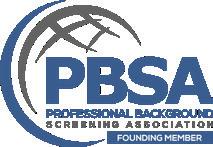
Sometimes a company’s biggest risk is an employee behind the wheel of a vehicle. Whether you employ a single driver or 5,000 Data Facts has you covered. Our partnerships with SambaSafety, Embark, and Beacon Insights make it possible for us to create an intuitive, thorough driver screening and monitoring solution based on your company’s specific needs. Our blend of technology and human e ort in our pre-employment screening and automated continuous monitoring process help your organization stay in compliance, reduce crashes, and decrease your insurance rates. Our lightning-fast processing time and almost real-time notifications reduce your company’s risk of employing drivers. Get better insights into your drivers by partnering with Data Facts.
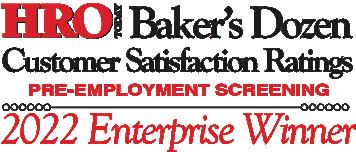
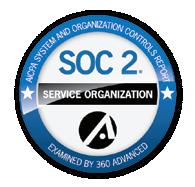
Criminal Records Searches • Verifications • Drug Screening • Credentialing • Driver Services • Monitoring • & Much More!
2023
2023
Join our monthly webinars to earn SHRM and HRCI recertification credits.


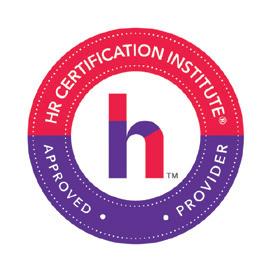
Women make up
56% of today’s
www.HRProfessionalsMagazine.com


Employment Law
18 Secure 2.0 +1: Retirement Plan Changes and One Notable Health Plan Change


31
Contact HR Professionals Magazine:
To submit a letter to the editor, suggest an idea for an article, notify us of a special event, promotion, announcement, new product or service, or obtain information on becoming a contributor, visit our website at www.hrprofessionalsmagazine.com. We do not accept unsolicited manuscripts or articles. All manuscripts and photos must be submitted by email to Cynthia@hrprosmagazine.com. Editorial content does not necessarily reflect the opinions of the publisher, nor can the publisher be held responsible for errors.
HR Professionals Magazine is published every month, 12 times a year by the Thompson HR Firm, LLC. Reproduction of any photographs, articles, artwork or copy prepared by the magazine or the contributors is strictly prohibited without prior written permission of the Publisher. All information is deemed to be reliable, but not guaranteed to be accurate, and subject to change without notice. HR Professionals Magazine, its contributors or advertisers within are not responsible for misinformation, misprints, omissions or typographical errors.
©2023 The Thompson HR Firm, LLC | This publication is pledged to the spirit and letter of Equal Opportunity Law. The following is general educational information only. It is not legal advice. You need to consult with legal counsel regarding all employment law matters. This information is subject to change without notice.
Bringing Human Resources & Management Expertise to You
workforce. Editor Cynthia Y. Thompson,
SHRM-SCP, SPHR Publisher The Thompson HR Firm, LLC Art Direction Park Avenue Design Marketing and Social Media Specialist Julie Nagem Photographer Charles B. Thompson Webmaster Leo Dimilo Contributing Writers Alexander Alonso Shelley Baur William Brown Jason Cline Dale Conder Harvey Deutschendorf Amy Shabacker Dufrane Ken Joyner Tim Keck T. Joseph Lynch Renee L. Martin Todd A. McFall Mike Medoro Megan Regan Stacey Stewart Features
note from the editor
Congratulations to Anne C. Sutherland, SHRM-CP!
Profile: Alexander Alonso, PhD, SHRM Chief Knowledge Advisor 6 Welcome to the 2023 SHRM-Atlanta SOAHR Conference 8 Meet the Texas SHRM Team 10 Welcome to the HR Conference Cruise 12 Talking Taboo – Chapter 4 –Electoral Politics by Alex Alonso Talent Management and Recruiting 22 Two Steps Forward, Three Steps Back 28 Bridging the Pay Equity Gap 29 JER HR Group Comprehensive Compensation Solutions 30 5 Common Myths and Misconceptions about the FCRA 38 Here’s How Kindness Can Change your Culture 41 Drive Change in the World of Work 42 3 Investments That Will Improve HR Data Management 46 5 Ways to Boost our Emotional Toughness Employee Benefits 14 Why Does Your Vending Company Matter? 16 Give Your Employees Five Reasons to Love You 17 The Benefits Group – We Do All the Work 24 What to Know Before You Go It “Alone” and Offer a Supplement Health Program to All Employees 25 Transform Your Employee Benefits from an Expense to a Competitive Advantage 43 And You Have a Choice in Health Insurance
MBA,
4
4
5
Rising
in Labor & Employment Law
Stars
36 The Compelled-Speech Doctrine
Educational Programs for HR Professionals 19 FIU Center for Leadership 20 Verbal De-Escalation – An HR Survivor Skill for 2023 21 Safehaven Security Group De-Escalation Master Class 23 Save 20% on HRCI Courses in 2023 –Use Code HRMAG23 27 SHRM Specialty Credentials 39 One Source Associates: Building People for Life & Leadership 40 University of Illinois School of Labor & Employee Relations 44 Online SHRM-CP | SHRM-SCP Online Certification Prep Class 48 WGU. Online. Nonprofit. Accredited SHRM Conferences 7 SHRM-Atlanta SOAHR Conference March 22 in Duluth 11 SHRM Talent Conference in Orlando April 16-1 26 Pictorial Highlights from the TN SHRM HR Business Leadership & Strategy Conference in Franklin February 10 39 SHRM23 in Las Vegas June 11-14 45 SHRM-Memphis Legal Conference in Memphis April 19 47 SHRM23 in Las Vegas June 11-14 April 2023 Issue features highlights from the SHRM Employment Law & Compliance Conference plus Updates on Employee Benefits Deadline to reserve space March 15 3 www.HRProfessionalsMagazine.com
34 Workers’ Comp: How to Deny a Claim and Make it Stick
Top
a note from the editor

What an honor to have Alexander Alonso, PhD, Chief Knowledge Officer at SHRM, on our March cover! Dr. Alonso is the author of Talking Taboo: Making the Most of Polarizing Discussions at Work featured in HR Professionals Magazine. He has authored additional books including The Price of Pettiness and Defining HR Success: A Guide to the SHRM Competency Model in Practice. Dr. Alonso is also a columnist for TIP and HR Magazine analyzing major trends in the workforce. Be sure to catch Chapter 4 of Talking Taboo: Electoral Politics on Page 10. Read all about Dr. Alonso’s exciting career in the profile on Page 5.
It is a pleasure to welcome Texas SHRM to our distribution footprint in this issue, which currently includes Alabama, Arkansas, Florida, Georgia, Kentucky, Louisiana, North Carolina, Mississippi, and Tennessee. There are 19,000 SHRM members and 33 SHRM Chapters in Texas. We invite you to meet the Texas SHRM Team on Page 8. We look forward to bringing you coverage of the Texas SHRM Conferences in 2023!
A special shout out to the HR Florida and Ohio SHRM attendees on the Celebrity HR Cruise! We are so excited to cover the HR Cruise for our April issue. Hats off to Chad Sorenson, Past-Director of
HR Florida, and Karen Fagnilli, Director of Ohio SHRM, for making the cruise happen. We know attendees will love this exciting adventure sailing in the Caribbean while picking up 14.25 SHRM and HRCI credits! Enjoy the networking and “floating” educational experience! We are looking forward to more of these cruise opportunities from Mike Medoro with Aspect Marketing and Communications, Inc.
Hello SHRM-Atlanta! We are also looking forward to covering the exciting 2023 SOAHR Conference in Duluth March 28-29. Please see the note from Jason Cline, CEO of SHRM-Atlanta, on Page 6. Be sure to read about all the upcoming learning opportunities in the Atlanta community. It is an honor to cover this annual event and bring you the highlights in our April issue.
We are excited to present the 2023 Rising Stars in Labor and Employment Law in our March issue. These outstanding young attorneys are under 40 and have been practicing in their respective firms for 10 years or less. They have received recognition from Super Lawyers or Chambers USA or have been recognized for outstanding contributions to their firm. Please take the time to congratulate those you know who have made this prestigious list. Also watch your email for our Rising Stars e-book later this month!
If you are not currently certified, I want to personally invite you to join our upcoming Online SHRM-CP | SCP Certification Exam Prep Class beginning April 12. The deadline to register is April 4. I am extremely proud of our online classes. The pass rate for our SHRM and HRCI Certification Exam Prep Classes is 90%. It is so rewarding to see these outstanding HR professionals receive their certifications! The difference in our certification classes is that I stay with you until you pass. Our classes are also guaranteed – if you do not pass the first time, you may take our next class at no additional charge. See Page 44 for details.

Get Certified in 2023!
cynthia@hrprosmagazine.com @cythomps
Congratulations to Anne Sutherland, SHRM-CP!
Anne C. Sutherland, Anne Sutherland passed her SHRM-CP exam following her December graduation from the Online HRCI | PHR | SPHR | SHRM Certification Exam Prep Class sponsored by HR Professionals Magazine


Anne graduated from University of Kentucky in 2016 and currently serves as the Employee Communications Specialist at Southern Ionics, Inc. (SII). Prior to joining SII in March of 2022, Anne was an Assistant Barn Manager with Scarteen Stud in Lexington, Kentucky. She then served as Horse Trainer, Ranch Hand and Administrative Assistant for Town Creek Farm, a worldrenowned Brangus cattle producer in West Point, Miss.
During her first year with SII, Anne was responsible for the complete overhaul of the company’s website and created an on-line, in-house store for corporate promotional goods. She is the editor of the quarterly employee newsletter, facilitates the scholarship program for children of Southern Ionics’ employees and corporate wellness program and directs the company’s charitable giving initiative.
2023 2023
4 www.HRProfessionalsMagazine.com
Alexander ALONSO, PHD

Society for Human Resource Management’s (SHRM’s) Chief Knowledge Officer
Alexander Alonso, PhD, SHRM-SCP is the Society for Human Resource Management's (SHRM's) Chief Knowledge Officer leader research, insights, and innovation functions, as well as the SHRM Foundation. His total portfolio includes a $30 million revenue stream based upon practical thought leadership designed to make better workplaces for a more inclusive world. In fact, Dr. Alonso was recognized as an inaugural member of the Blue Ribbon Commission on Racial Equity in the Workplace, a coalition designed to foster equitable and inclusive cultures. His research has been featured in numerous outlets including USA Today, NBC News, BBC, CNN, and more. He has served as a member of several speakers bureaus with more than 400 speaking engagements over the last decade being called “one of the most effective communicators of data in recent memory by HR Magazine. His works have been recognized for their contribution to real-world human capital issues. They include being recognized with SIOP’s 2007 M. Scott Myers Award for Applied Research in the Workplace for developing the federal standard for learning and development of healthcare providers; a 2009 Presidential Citation for Innovative Practice by the American Psychological Association for designing performance management systems; and the 2013 SIOP Distinguished Early Career Contributions for Practice Award for extensive applied research on the link between human resource management and organizational sustainability. Throughout his career, he has published works in peer-reviewed journals, authored several chapters on community-based change initiatives in workforce readiness, and authored books like The Price of Pettiness, Talking Taboo: Making the Most of Polarizing Topics (in press), and Defining HR Success: A Guide to the SHRM Competency Model in Practice. Alex also serves as a columnist analyzing major trends in the workforce for TIP and HR Magazine. He has served on several professional society boards including as president for the Personnel Testing Council of Metropolitan Washington Area. Alex currently serves on the North American HR management Association (NAHRMA) board and the Zeal Capital Advisory board. He is a Fellow of SIOP, Division 14 of the American Psychological Association.
on the cover
5 www.HRProfessionalsMagazine.com
Welcome to SHRM-Atlanta’s HR Conference, SOAHR 2023!
Thank you for choosing SHRM-Atlanta as your professional association and for attending our annual conference*! You are a leader in creating and maintaining best-in-class workplaces and workforces in the metro Atlanta community, and it’s up to you to get everything you can from SOAHR 2023. We hope you leave each session, each day, and the entire conference with new ideas and tools you can implement to advance both your organization and yourself.
SHRM-Atlanta understands that the Atlanta HR community is vast and diverse, and we are expanding our offerings in 2023 to reach as many people managers as possible to tackle the challenges you face. Among them are:
• HR Depart of One (or None), supporting small HR teams with templates, tools, and counsel to extend their capacity and focus on what matters most for their workforce
• HR Essentials, a self-paced virtual course for those new to people management
• DEI Summit, convening people managers with responsibility and passion for cultivating inclusion, equity, and belonging in their organization
• Atlanta Works Conference, October 10 at Georgia Institute of Technology, for workplace leaders from the public sector, start-ups, retail, restaurants, and small businesses
• Atlanta Day(s), partnering with local leaders to facilitate outreach, collaboration, and service in the metro area
• Professional Networks & Interest Groups, providing online and in-person connections within industry type, personal identities, and professional roles
SHRM-Atlanta really does offer something for everyone who performs any people management task as part of their job, regardless of title. We welcome you to our community, look forward to the expertise you can share with others, and hope you also gain knowledge from your peers and colleagues.
Sincerely,
Jason Cline, CEO SHRM-Atlanta
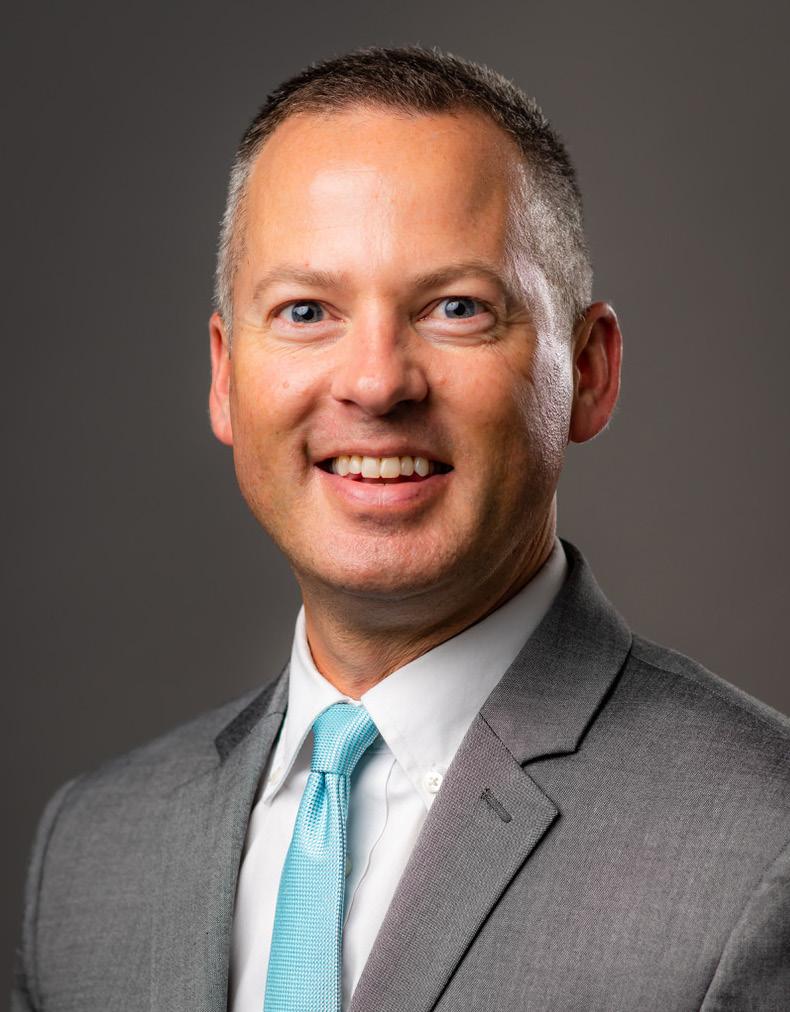
6 www.HRProfessionalsMagazine.com
* All two-day registrants of the in-person SOAHR conference will receive access to on-demand content and the virtual conference happening April 18-19. Alternatively, a virtual-only registration option is still available for those not able to join in person.


March 28-29, 2023 Gas South District Convention Center Duluth, GA NEWLocation! Atlanta’s CAN’T MISS HR conference REGISTER TODAY soahr.net SOAHR registrants will automatically receive access to the BONUS virtual conference April 18-19. Can't attend in person? Choose virtual-only registration • New session formats • Tuesday evening dinner event • Freshly renovated facility • Rising Leaders workshop • Morning energizers • Bonus Virtual Conference
WELCOME TEXAS SHRM!
Meet the Texas SHRM Team




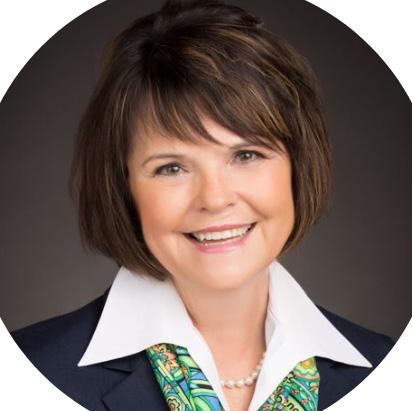


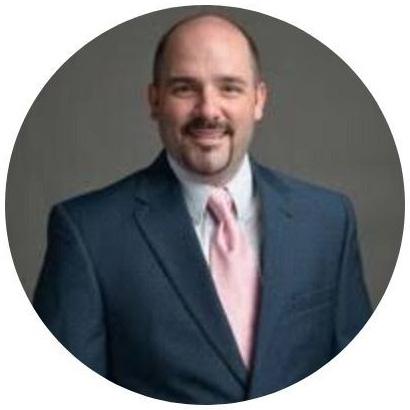


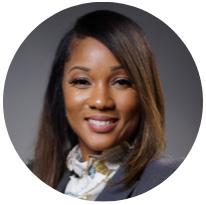


TEXAS SHRM EXECUTIVE COMMITTEE
TEXAS SHRM DISTRICT DIRECTORS
State Director
Rose Ann Garza
District 1
LaTonya McElroy
Assistant State Director Core Leadership Areas
Holly Novak
District 4
Staci Benavides
State Director - Elect Dustin Paschal
District 2 Mike Coffey
Assistant State Director Professional Development
Michelle Friesenhahn
District 5
Pamela Carroll
Secretary/Treasurer
Edie Harvey
District 3 Brian Hayes
Assistant State Director District Directors
Bruce Waller
District 6
8 www.HRProfessionalsMagazine.com
Wendy Chance
TEXAS SHRM CORE LEADERSHIP AREA DIRECTORS
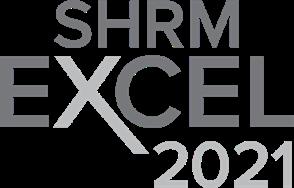
TEXAS SHRM INITIATIVES

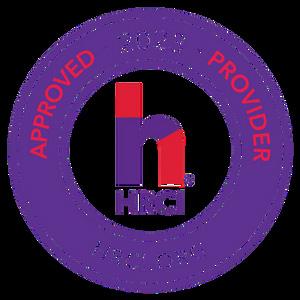
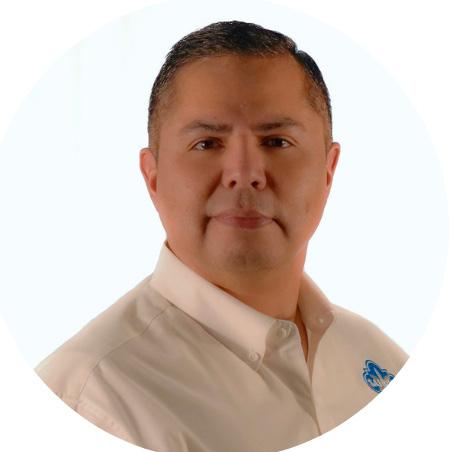








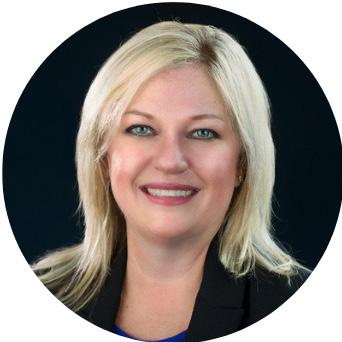


 Certification Samantha Fulford
Certification Jeri George
SHRM Foundation
Kathryn Perez
Global Meredith Morris
Students Kimer Moore
Legal and Legislative Kristen Bauer, JD
Legal and Legislative Sarah Glaser
DEI
Mayela Macias
Membership April Metcalf
Membership Claudia Camacho
Emerging Professionals Valeria Fernandez
Leadership Development Lisa Blanton
Leadership Development Gonzalo Soliz
Certification Samantha Fulford
Certification Jeri George
SHRM Foundation
Kathryn Perez
Global Meredith Morris
Students Kimer Moore
Legal and Legislative Kristen Bauer, JD
Legal and Legislative Sarah Glaser
DEI
Mayela Macias
Membership April Metcalf
Membership Claudia Camacho
Emerging Professionals Valeria Fernandez
Leadership Development Lisa Blanton
Leadership Development Gonzalo Soliz
!"#$%&"
Welcome to the HR Conference Cruise!
!"#$%&" (% ()" *+ ,%-."/"-$" ,/012"3

Welcome from HR Florida and the Ohio SHRM State Council!
"#$%&'# ()&' *+ ,$&)-./ /0. 12# 32-&!4*+5!41/1#! 6&70%-$8
!"#$" &"'()*+"& +*,+ -./ &"0(&"& +. "12,$3 .4 ./$ /4(5/"%67
We’re delighted that you decided to embark on our unique HR Conference at sea and are ready to learn, network, and have fun on the Celebrity Summit.
8.49"$"40" ,+ :", ,4& ,$" $",&- +. '",$4; 4"+<.$3; ,4&%*,="%9/4%.4% +*" !"#"$%&'()*+,,&'
A couple of years ago we “floated” the idea of having an HR Conference that moves. At that time we had no idea how this would all turn out. Our goal was to combine a robust Human Resource conference with an exciting cruise to tropical islands and gorgeous getaways - while earning recertification credits and networking with our peers.
? 0./@'" .9 -",$: ,). <" A9'.,+"&B +*" (&", .9 *,=(4) ,4 67% 8.49"$"40" +*,+ 1.=":> ?+ +*,+ +(1" <" *,& 4. (&", *.<%+*(:% <./'&%,''%+/$4%./+>%C/$%).,'%<,:%+.%0.12(4"%,%$.2/:+%6/1,4% 7":./$0"%0.49"$"40"%<(+*%,4%"D0(+(4)%0$/(:"%+.%+$.@(0,'%(:',4&:%,4&% ).$)"./:%)"+,<,-:% <*('"%",$4(4)%$"0"$+(9(0,+(.4%0$"&(+:%,4&% 4"+<.$3(4)%<(+*%./$%@""$:>
We’re pleased that the idea turned into reality and, we’re thrilled that several of you are repeat conference cruisers!
!"#$" @'",:"& +*,+ +*" (&", +/$4"& (4+. $",'(+- ,4&; <"#$"%+*$(''"& +*,+ :"="$,' .9 -./ ,$" $"@",+ 0.49"$"40" 0$/(:"$:F
We have a full schedule of top-notch speakers and a “boat- load” of recertification credits. The conference includes two ports of call in Nassau, Bahamas and Cozumel, Mexico.
!" *,=" , 9/'' :0*"&/'" .9 +.@ 4.+0* :@",3"$: ,4& , A2.,+ '.,&B .9 $"0"$+(9(0,+(.4 0$"&(+:> G*" 0.49"$"40" (40'/&": +<.% @.$+:%.9%0,''%(4% H,::,/;%I,*,1,:%,4&%8.J/1"';%K"D(0.
The entire HR Conference Cruise schedule has been pre- approved for 14.25 SHRM Professional Development Credits (PDCs) and an equal number of recertification credits from the HR Certification Institute.
G*"%"4+($"%67%8.49"$"40"%8$/(:"%:0*"&/'"%*,:%2""4%@$" ,@@$.="& 9.$ LM>NO P67K Q$.9"::(.4,' R"="'.@1"4+ 8$"&(+:%SQR8:T ,4& ,4 "5/,' 4/12"$ .9 $"0"$+(9(0,+(.4 0$"&(+: 9$.1%+*"%67%8"$+(9(0,+(.4% U4:+(+/+">%
Thank you again for attending the 2023 HR Conference Cruise. If you purchased the internet package - please remember to tweet about your experience using #HRCRUISE2023.
G*,43 -./ ,),(4 9.$ ,++"4&(4) +*" NVNW 67 8.49"$"40"%8$/(:"> U9 -./ @/$0*,:"& +*" (4+"$4"+ @,03,)" @'",:"%$"1"12"$%+.%+<""+%,2./+% -./$%"D@"$("40"%/:(4)%X6787YUPZNVNW
Sincerely,
P(40"$"'-; K(0*,"' [>%K"&.$. ?:@"0+ K,$3"+(4) ,4& 8.11/4(0,+(.4:; U40>


Both HR Florida and the Ohio SHRM State Council are pleased to partner with Aspect Marketing for a different type of HR Conference. This now annual conference is a terrific event and opportunity to network with your peers and stay on top of HR topics and trends.
I.+*%67%\'.$(&,%,4&%+*"%C*(.%P67K%P+,+"%8./40('%,$"%@'",:"&%+.%@,$+4"$% <(+*%?:@"0+%K,$3"+(4)%9.$%,%&(99"$"4+%+-@"%.9%67%8.49"$"40">%G*(:%4.<% ,44/,'%0.49"$"40"%(:%,%+"$$(9(0 "="4+ ,4& .@@.$+/4(+- +. 4"+<.$3 <(+* -./$ @""$:%,4&%:+,-%.4%+.@%.9%67%+.@(0:%,4&%+$"4&:>
G*"%+<.%0./40(':%,$"%4.4 @$.9(+%.$),4(J,+(.4:%,4& ,99('(,+":
.9 G*" P.0("+- 9.$ 6/1,4 7":./$0"
The two councils are non-profit organizations and affiliates of The Society for Human Resource Management (SHRM), the world’s largest HR Professional society with over 300,000 members in more than 165 countries.
K,4,)"1"4+ SP67KT; +*" <.$'&#: ',$)":+ 67 Q$.9"::(.4,'%:.0("+-%<(+*% .="$%WVV;VVV%1"12"$:%(4%1.$"%+*,4%L]O%0./4+$(":>
Our membership is made up of volunteer leaders who are elected or appointed to The Council and includes local SHRM affiliated chapters in Florida and Ohio.
C/$ 1"12"$:*(@ (: 1,&" /@ .9 =.'/4+""$ '",&"$: <*.%,$"%"'"0+"&%.$% ,@@.(4+"&%+.%G*"%8./40('%,4&%(40'/&":%'.0,'%P67K%,99('(,+"&%0*,@+"$:% (4%\'.$(&,%,4&%C*(.>
The Councils are dedicated to leading, educating, and inspiring thousands of HR professionals in our states. We also serve to make an impact in our local communities by giving back and making HR visible by participating in community events and activities. Visit the Council websites at hrflorida.org/ or ohioshrm.org for more information.
G*"%8./40(':%,$"%&"&(0,+"&%+.%'",&(4);%"&/0,+(4);%,4&%(4:@($(4)% +*./:,4&:%.9%67%@$.9"::(.4,':%(4%./$%:+,+":>%!"%,':.%:"$="%+.%1,3"% ,4%(1@,0+%(4%./$%'.0,'%0.11/4(+(": 2- )(=(4) 2,03 ,4& 1,3(4) 67 =(:(2'" 2@,$+(0(@,+(4) (4 0.11/4(+- "="4+: ,4& ,0+(=(+(":> ^(:(+ +*"%8./40('% <"2:(+":%,+%!"#$%"&'()%"*+,.$%%!&%-!".)%"*,9.$%1.$"%(49.$1,+(.4>
Thank you again for attending the March 2023 HR Conference Cruise. We hope that you will take away ideas with real-world applications while learning from national speakers, authors, and top HR professionals.
G*,43%-./%,),(4%9.$%,++"4&(4)%+*"%K,$0*%NVNW 67%8.49"$"40" 8$/(:"> !" *.@" +*,+ -./ <('' +,3" ,<,- (&",:%<(+*%$",' <.$'&%,@@'(0,+(.4:%<*('"% '",$4(4)%9$.1%4,+(.4,'%:@",3"$:;%,/+*.$:;%,4&%+.@%67%@$.9"::(.4,':>
Have a wonderful time networking, expanding your HR knowledge, cruising, and having fun!
6,=" , <.4&"$9/' +(1" 4"+<.$3(4); "D@,4&(4) -./$ 67%34.<'"&)";% 0$/(:(4);%,4&%*,=(4)%9/4F
P(40"$"'-;
Sincerely,
8*,&%^%P.$"4:.4 _,$"4 \,)4(''( Q,:+ R($"0+.$; 67 \'.$(&, R($"0+.$; C*(. P67K
#HRCRUISE2023
10 www.HRProfessionalsMagazine.com
THE WORLD OF WORKPLACE RECRUITING IS CONSTANTLY EVOLVING.
HOW ARE YOU CHANGING TO ADAPT?
Learn how to make a difference at
CONFERENCE & EXPO
TA LE NT
Moderator: Tony Lee, Vice President, Content | SHRM

Presenter: Heather “HD” Deyrieux, SHRM-SCP Human Resources Manager | Sarasota County Government
Presenter: Chelsea C. Williams, Founder and CEO | Reimagine Talent Co.


ORLANDO, FL & VIRTUAL APRIL 16-19, 2023
Featuring in-depth sessions like Recruiting Trends and Tactics for 2023 and Beyond with Tony Lee, SHRM’s Vice President of Content, moderating a panel of experts on proven, effective recruiting strategies for the year ahead, plus branding techniques that will keep you ahead of the curve.
Get the tools and strategies you need to remain competitive in the changing talent landscape.

at shrm.org/talent-recruiting

REGISTER
TODAY
We are honored to present our fourth installment of
Talking Taboo
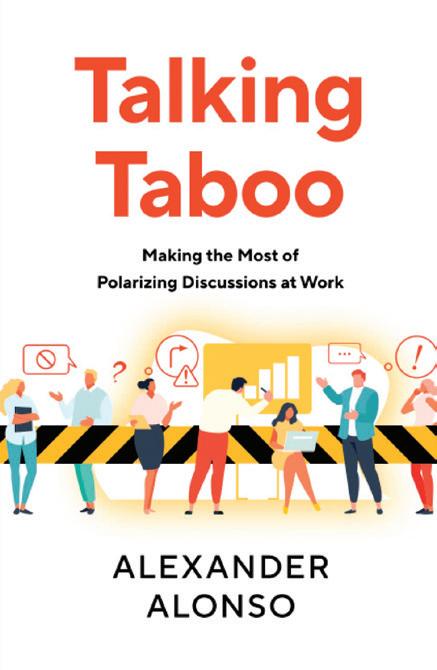
Making the Most of Polarizing Discussions at Work
BY ALEXANDER ALONSO, PHD, SHRM-SCP ALEX IS SHRM’S CHIEF KNOWLEDGE OFFICER.
Chapter 4 Electoral Politics
Many people welcome political discussions; others dread them. This chapter presents situations in which debates over whom and what people are voting for—candidates, legislation, political parties in general—cause disruptions in the workplace. Some of these incidents touch on multiple issues (e.g., race, religion, sex, health), which later chapters focusing on those topics explore more thoroughly. Electoral politics, though, is the overriding factor.
VOTE FOR MY GUY ON THE CITY COUNCIL (. . . OR ELSE?) Summary
The owner of a small company tells the workforce to vote for a certain candidate in a local election. Employees are afraid to disagree. Ignoring cautions from HR, the owner continues to talk to them about their votes right before and just after election day. The employees lose respect for the owner and, eventually, the company. This is a significant issue for the organization and is resolved poorly.
The owner of a small business in a rural community sent out an email to the entire company urging everyone to vote for a particular candidate in the upcoming local city council election. He said that this candidate’s plans for economic growth would directly impact the company financially.
12 www.HRProfessionalsMagazine.com
I was the new HR assistant who had been working there only a few months. I felt that it was unethical and unprofessional for a person in authority to dictate whom his employees should vote for. Other employees were also uncomfortable. They came to HR and expressed fear that their livelihoods could be in jeopardy if they did not agree with the owner’s electoral choice.
I discussed the employees’ concerns with the HR manager, asking if this type of behavior was common in the company. The manager told me she didn’t think the owner understood the situation and promised to talk to him to help him understand how employees could interpret his email.
The day before the election, however, the owner walked around the office asking employees in person whom they were going to vote for. When he approached the HR manager, she politely declined to answer him, respectfully explaining that whom anyone was going to vote for should not be discussed in the office, especially in a manner to try and sway their vote. She also said that with the message coming from him, employees could feel pressured, and that maintaining his good reputation was important. The owner was somewhat defensive but did offer an apology (the qualified kind, as in “if I said something to offend you . . .”).
After the owner’s favored candidate won the election, he sent out another company-wide email, this time thanking everyone for voting for “the right candidate.” The HR manager once more explained to the owner how his actions could be viewed by employees. Now he very visibly disregarded her advice and treated her with indifference.
Employees lost respect for him, over this and other issues. Within two years, the company closed its doors due to bankruptcy.
Had the HR manager not discussed the matter with the owner, his behavior would most likely have continued, but she did address it and his behavior still remained unprofessional. There may not have been any good options.
Continued on our website: https://hrprofessionalsmagazine.com/wp-content/uploads/2023/01/chapter-3.pdf
13 www.HRProfessionalsMagazine.com
Let me tell you about a time when everything that Advantage Refreshments does differently made a big difference! I pulled into the parking lot of a particular corporate headquarters building recently and the thought of landing this vending contract was paramount in my mind, to say the least. Our research had revealed that they had three prime locations in our market. Opportunities like this do not come along every day.
The receptionist greeted me. I introduced myself and asked for the HR manager, the person I was to meet. A few minutes passed and the receptionist escorted me to the conference room. I was a bit surprised to see four people waiting inside for me, but I knew it would be fine because I was confident that once everyone reviewed my proposal, they would be impressed. The four people sitting at the conference table included the company President, Human Resource Manager, Vice President of Operations, and the Facilities Manager.
Cutting To the Chase
After introductions, just as I was beginning to open my mouth the President said, “I don’t want to sound rude, but you are the third company we have met with this week. How is your company any different than your competitors’, because all vending companies are selling the same brand name products and assuming your prices are competitive, why should we choose you as our employee refreshment service provider?” For good measure, he finished by saying, “All of the vending companies say their service is great and that when our machines need service, they will be here.”
I thanked him for his comment and then proceeded to agree with him that the overwhelming majority of vending companies are pretty much alike. He looked at me and said, “Well at least we can agree on that.”
I began the presentation with our, “Top Ten List of How We Are Not Your Typical Vending Company.” I jokingly said that if David Letterman could have his top ten list, we could also. The list includes the following:
The Top Ten List
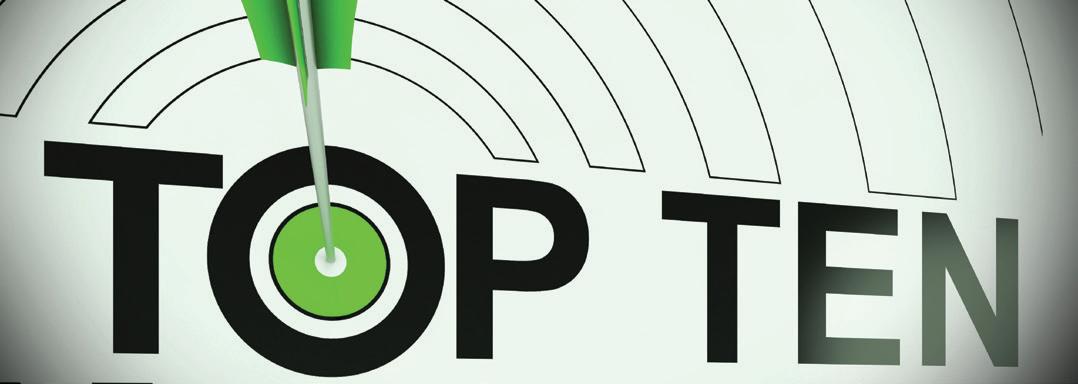
1. We install brand new state of the art electronic merchandisers (vending machines) at each location. This goes against the typical thought process of most vending companies that install used equipment at a new location.
2. All our brand-new merchandisers come equipped with credit/debit card acceptors. Hard to believe that some vending companies in 2023 have machines at locations that do not accept credit cards.
3. Each location receives a cash recycler. Our machines make change for up to a $20 bill with $5 or $1 bills for their employees instead of a weighing them down with a pocket full of quarters.
Why Does Your Vending Company Matter?
 By KEN JOYNER
By KEN JOYNER
4. Our brand-new merchandisers all have an electronic Guaranteed Product Delivery System. Employees either get the product they have selected or get their money back, guaranteed, no more post-it notes on machines or employees kicking and shaking machines because they did not get their product and even worse, the machine kept their money. The HR manager commented how nice that would be since her team spends an inordinate amount of time handling refunds for their current vendor. They no longer must fill out vending refund slips or wait for their vendor to come by and make refunds.
5. BOGO (Buy-One, Get-One Free Program). Every month we will have at least one item in the machines that will have a free-vend coupon attached to it allowing their employees to get the second item free.
6. $2 dollar bills will be attached to products for employees to win when they purchase certain items.
7. Two-For-A-Dollar program. We always have at least two cold drinks and three snack items that are priced at 50 cents.
8. Free lottery scratch-off tickets for their employees to win when buying vending products from our brand-new machines. An employee at one of our locations won $1,000 from a winning Lotto ticket affixed to the back of a bag of cookies.
9. Free tasting samples of our frozen food products on a periodic basis especially when we introduce new items.
10. Quarterly employee survey forms for their people to tell us what they want in their machines. Employees get to determine the items that will be available in the vending machine.
Differences Do Make a Difference
After the presentation, the president of the company came up to me, shook my hand and apologized for possibly sounding rude when he made the comments about all vending companies being the same. Yes, we did end up getting all three of their locations.
At Advantage Refreshments, we are proud of the differentiators that set us apart from other vending companies. One of our biggest and best cheerleaders for our company and the services we provide are the team members at the locations we serve. Exceeding their expectations is our number one priority. Does your vending company do all of this for you? If not, call us today and begin to enjoy an employee refreshment program that you associates will enjoy!
Ken Joyner, SHRM-SCP 715-587-7900 Ken@AdvantageRefreshments.com
14 www.HRProfessionalsMagazine.com

If so, contact me today, ken@advantagerefreshments.com or 715-587-7900. Does your current Vending Program look like this? 15 www.HRProfessionalsMagazine.com
Loyalty is tough. Dogs have it mastered, but humans? Our species is a work in progress. But that doesn’t mean we can’t do everything in our power to foster loyalty among team members.
These days, people are worried about the possible effects of a down economy and doomsday predictions. Meanwhile, do you know what we’re actually seeing? There are plenty of jobs but not enough people willing to work.
So, what can we do? Anything? Or do we have to accept that “people today are just lazy” or “the new would-be workforce is not willing to be loyal?”
You can think that if it makes you feel better. But why would that make you feel better? People don’t want to work where they feel like a number. And can you blame them? What you need are a few creative ways to demonstrate to your employees how much you love them:
1. Offer flexible working hours. The younger generations aren’t looking for their parents’ 9-to-5s. Offering flexible hours will show employees you value their time and are willing to be accommodating to keep them productive and satisfied.
2. Don’t skimp on the rewards. Whether monetary, gift cards, or bonus vacation days, rewarding employees for their hard work can boost morale and loyalty. But this is more than the adult version of participation trophies! Your team must work for it (just spell out the terms clearly).
Give Your Employees Five Reasons To Love You
By WILL BROWN
3. Facilitate team-building opportunities. Developing meaningful relationships at work is retention solid gold! Nearly two-thirds of workers in a U.S. survey who had six to 25 workplace friends said they “love” their company. So, introduce some office games, organize social events, and encourage collaboration between colleagues to strengthen the bond between employer and employee.
4. Provide professional development courses. Show that you care about their career path and help each individual grow by offering courses related to their job role and beyond. It’s an excellent way for your employees to display additional skills that benefit the company. It’s a win-win.
5. Provide Fortune 500 benefits. Money is essential—but so is health! If you want to keep employees around for the long term, ensure they have financial security and access to the best possible benefits. That includes health care, disability, dental, vision, and more. Load up on those perks to make them feel as unique as they are!
Sound too expensive to make that last one a reality? Not when you’ve got the right broker. At The Benefits Group, we are defying the “order taker” broker stereotype. Small- to mid-sized businesses deserve to offer Fortune 500 benefits to their employees—and we’re doing our best every day to make that a reality.
Not all heroes wear capes. But we’re ready to make you look like a superhero to your employees, so they feel the love. Let us turn you into a benefits superhero.

 William G. Brown, CPA| Principal Member The Benefits Group will@benefits.place | thebenefits.group
William G. Brown, CPA| Principal Member The Benefits Group will@benefits.place | thebenefits.group

16 www.HRProfessionalsMagazine.com
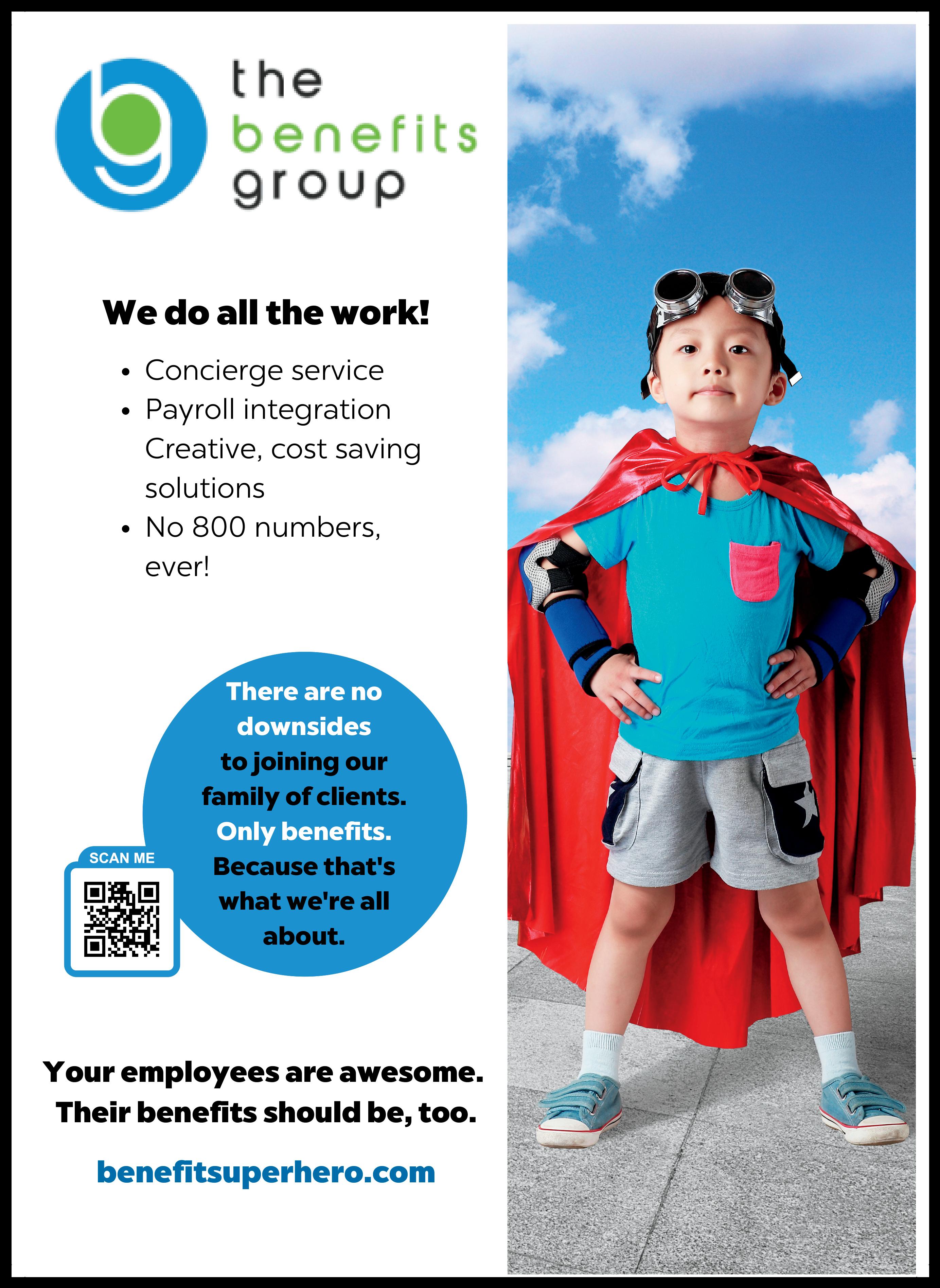
• 17 www.HRProfessionalsMagazine.com
SECURE 2.0 + 1:
Retirement Plan Changes and One Notable Health Plan Change
By BASS, BERRY & SIMS EMPLOYEE BENEFITS PRACTICE
As widely reported, the president recently signed into law the Consolidated Appropriations Act of 2023 (CAA 2023), a $1.7 trillion omnibus spending bill, which contains significant provisions affecting employer-sponsored retirement and welfare benefit plans. The provisions impacting retirement plans are included in a separate section of CAA 2023 referred to as the SECURE 2.0 Act of 2022 (SECURE 2.0 or the Act), which in many ways builds upon the first SECURE Act passed in 2019 (SECURE 1.0). The following items highlight what we believe are the most important changes affecting employer-sponsored retirement and welfare benefit plans and also provide practical advice for plan sponsors.
SECURE 2.0’s Key Retirement Plan Provisions
1. Expanding Auto-Enrollment: Currently, plan sponsors are permitted, but not required, to implement automatic enrollment and automatic escalation in 401(k) and 403(b) plans. Under SECURE 2.0, beginning on January 1, 2025, plans that were established after December 29, 2022 (i.e., newly-created plans) will be required to automatically: (1) enroll participants with an initial contribution rate between 3% and 10% of compensation; and (2) escalate participants’ deferral rate each year by 1% up to a maximum of at least 10% (but not more than 15%). Small businesses (with ten or fewer employees) and employers that have existed for less than three years are exempt from these new provisions.
Insight: While increasing participation and participation rates among employees is generally seen as a positive, this does come at a cost to plan sponsors, both financial (e.g., increased TPA fees and employer contribution amounts) and administrative complexity (likely increase in small account balances and participants ceasing participation).
2. Expansion of the IRS’s Employee Plans Compliance Resolution System (EPCRS): Currently under EPCRS, retirement plan sponsors may only selfcorrect certain plan document errors, insignificant operational errors, and significant operational failure (provided the significant failure is corrected within a limited time). SECURE 2.0 expands EPCRS to generally permit selfcorrection of any “inadvertent failure” (whether significant or insignificant), provided the correction is made within a “reasonable period” after the failure is identified, subject to a few exceptions. The Act does not define what constitutes an “inadvertent failure” or a “reasonable period,” so many questions remain. The Act directs the Department of the Treasury to make corresponding updates to EPCRS within two years.
Insight: The result of the EPCRS expansion means that the vast majority of operational and qualification errors should be eligible for self-correction, whereas in many cases, these errors would have previously been corrected through a Voluntary Correction Program filing with the IRS. This should materially decrease the cost of correcting plan errors.

3. Expanded Coverage for Part-Time Workers: Under SECURE 1.0, 401(k) plans are required to permit participation by employees who work at least 500 hours (but less than 1,000 hours) per year for three consecutive years. For plan years beginning after December 31, 2024, SECURE 2.0 reduces the number of consecutive years that such employees must meet the 500-hour requirement from three to two years. This expanded participation requirement applies only to elective deferrals, meaning that employees who meet these part-time eligibility rules do not have to be made eligible for employer contributions, such as employer matching and nonelective contributions.
Insight: Plans should already be monitoring hours for part-time employees to ensure compliance with SECURE 1.0, so this change should not increase the administrative burden of tracking hours but will result in an increase in the number of plan participants.
4. Automatic Cash-Out Amount Increased: Current law allows retirement plans to immediately distribute a participant’s account without their consent (commonly referred to as a cash-out) provided the balance in the participant’s account does not exceed $5,000. Under SECURE 2.0, the cash-out threshold is raised to $7,000, effective for distributions made after December 31, 2023.
Insight: This change will be much welcomed by plan sponsors, who often pay administrative and recordkeeping fees based on the number of plan participants. A higher cash-out limit will allow plan sponsors to reduce the number of inactive plan participants.
5. Changes to Catch-Up Contributions – Increased Amount and Tax Treatment: SECURE 2.0 changes the maximum catch-up contribution limit and the tax nature of catch-ups. Currently, the maximum amount of catch-up contributions that can be made by a catch-up eligible participant annually is $6,500 ($3,000 for SIMPLE plans). For tax years beginning after December 31, 2024, the cap for catch-up contributions will be raised for individuals aged 60-63 to the greater of $10,000 ($5,000 for SIMPLE plans) or 150% of the regular catch-up amount in 2024 (2025 for SIMPLE plans). The statutory dollar amounts are indexed for inflation beginning in 2026. Currently, catch-up contributions can be made on a pre-tax ora Roth basis. Starting January 1, 2024, catch-up contributions must be made on a Roth basis (i.e., taxable), except for participants whose prior year wages do not exceed $145,000 (indexed for inflation).
Insight: This revenue-generating change will force plans that did not previously allow for Roth contributions to begin administering their plans with Roth provisions to the extent that they wish to continue allowing catch-up contributions.
6. Reducing Retirement Plan Disclosures to Unenrolled Participants: Before SECURE 2.0, employees who did not participate in their employer-sponsored retirement plans were still required to receive extensive participant disclosures from the retirement plans in which they were eligible to participate. Effective for plan years beginning after December 31, 2022, the disclosures that must be made to unenrolled participants from defined contribution plan sponsors is limited to the annual reminder notice of eligibility and documents that such participants are entitled to receive upon request.
Insight: For plan sponsors that still distribute paper copies of required disclosures or have difficulty meeting the electronic disclosure rules for portions of their population, this change will be much welcome.
7. Treatment of Employer Contributions as Roth Contributions: Prior to SECURE 2.0, employer matching contributions and nonelective contributions could not be made on a Roth basis. Effective on the date of enactment, SECURE 2.0 provides that 401(a), 403(b), and governmental 457(b) plans may permit participants to designate some or all employer matching contributions and nonelective contributions as designated Roth contributions when received, but only to the extent that a participant is fully vested in these contributions. For plans that add this option, it should reduce the need for in-plan Roth conversions of employer contributions amounts for participants who desire this alternative tax treatment.
Insight: Although this change may appear limited in application (as most employer contributions are not 100% vested when made), it should apply with respect to participants who have already satisfied their plan’s vesting conditions, after which all employer contributions are fully vested.
8. Increased Age for Required Minimum Distributions: Building off of SECURE 1.0’s extension of the age at which required minimum distributions (RMDs) must be made, SECURE 2.0 increases the RMD age from 72 to: (1) age 73 starting on January 1, 2023 (for individuals who attain age 72 after December 31, 2022, and for individuals who attain age 73 before January 1, 2033); and (2) age 75 starting on January 1, 2033 (for individuals who attain age 74 after December 31, 2032).
18 www.HRProfessionalsMagazine.com
· Insight: A reminder that the RMD age is the maximum age at which plans must require distributions. Plans are permitted to force out distributions at lower ages, but in practice few plans do so.
9. Matching Contributions for Student Loan Payments: Currently, employer matching contributions are not permitted to be based on anything other than participant elective deferrals or other elective contributions. Effective for plan years beginning after December 31, 2023, SECURE 2.0 permits employer matching contributions to be made based on an employee’s qualified student loan payments (up to the Code Section 402(g) annual deferral limit) for 401(k), 403(b), SIMPLE IRAs and 457(b) plans.
Insight: This change, if adopted by plans, should alleviate the dilemma for participants faced with the decision of either paying down their student loans or participating in their employer-sponsored retirement plan, both of which are supported by policymakers.
Extension of Relief for Telehealth, Remote Care Services and HSA Eligibility
CAA-2023 extends relief provisions involving telehealth, remote care services and health savings account (HSA) eligibility. As background, the CARES Act amended the HSA rules to permit high-deductible health plans (HDHP) to provide coverage for telehealth and other remote care services without first meeting the plan’s minimum deductible (sometimes referred to as first-dollar coverage). Without this rule, access to telehealth and other remote-care services before satisfying the HDHP’s deductible could lead participants to be ineligible to contribute to HSAs. Under the CARES Act relief, however, a health plan was treated as an HDHP even if it did not have a deductible for telehealth or other remote care services for plan years beginning on or before December 31, 2021. Thus, an individual covered under a health plan that provided first-dollar coverage of telehealth and other remote care services was still eligible to contribute to an HSA. This relief was later extended from April 1, 2022, to December 31, 2022 (notably leaving a gap in relief at the beginning of 2022), after which it was set to expire.
CAA-2023 further extends this relief for plan years beginning after December 31, 2022, and before January 1, 2025. This means that calendar year plans may offer telehealth and other remote care services on a first-dollar basis for all of 2023 and 2024 without disrupting participant HSA-eligibility.
Insight: Plan sponsors increasingly offer telehealth and remote care services to their eligible employees and have been interested in more flexibility regarding paying for these benefits, so this relief is welcome. Neither CAA-2023 nor the prior relief provisions define “remote care,” so the scope of remote care services that can be provided under this relief without disrupting HSA eligibility could be viewed as expansive. Notably, however, CAA-2023 did not extend another piece of COVID-19 relief: the temporary exemption from certain Affordable Care Act requirements for large employers who offer telehealth and other remote care services to their non benefits-eligible employees. Further relief in this regard would be welcome.

Deadlines for Plan Amendments
The deadline for plan amendments made pursuant to SECURE 2.0, or any IRS or Department of Labor regulations interpreting SECURE 2.0’s requirements, is the end of the first plan year beginning on or after January 1, 2025 (or 2027 for governmental and collectively bargained plans). SECURE 2.0 also extended the amendment deadlines under SECURE 1.0, the CARES Act, and the Taxpayer Certainty and Disaster Tax Relief Act of 2020 until the end of the first plan year beginning on or after January 1, 2025 (instead of the previous deadline of 2022).
If you have any questions about SECURE 2.0’s impact on your retirement plans or the implications of CAA-2023’s extension of relief for telehealth, remote care services and HSA-eligibility, please contact a member of our Employee Benefits Practice Group by visiting https://www.bassberry. com/services/employee-benefits-transactions/
This article was first posted on the Bass, Berry & Sims HR Law Talk Blog on January 23, 2023
19 www.HRProfessionalsMagazine.com
An HR Survival Skill for 2023
Goleman in his book of the same name, first published in 1995. He recognized that the most successful people weren’t necessarily the ones with the highest IQ. They were the ones who had mastered four things:
questions that make people think and create insights that lead to positive change.
“Here he comes, and boy, does he look mad!”
“I get intimidated every time I have to talk to her.”
“I don’t know how to get him to calm down.” Have you ever felt like that? Ever been in an argument that escalated out of control? Ever wish you had the skills to calm people down when things get heated?
It’s a skill we all need.
When emotions run high, and people get angry, they sometimes do things they’d never usually do. They will shout and scream and say things they don’t mean.
And sometimes, they will become violent.
In fact, for many people, violence has become a viable “solution” to their problems.
According to a recent study by Zippia, the workforce is taking the brunt of this issue: Over 20,000 people were injured in assaults at work.
Three-hundred-ninety-two people were murdered.
A staggering 94% of people have been bullied or intimidated at work.
68% of people don’t feel safe on their job. Good de-escalation skills are a must, whether it is a subordinate who gets angry during a performance review, an argument over a parking space, or a fight with your spouse.
To learn how to address this situation, we first want to cover the biggest mistake most people make during a conflict.
They get emotionally involved.
We have all gotten angry and said something we didn’t mean or done something we shouldn’t have done. In the context of an argument with an otherwise loving spouse, that can result in decades of reminders about the cruel and thoughtless thing that came out of your mouth. In a work context, it might damage your career. During a road rage incident, the cost could be your life.
The concept of Emotional Intelligence was popularized by psychologist Dr. Daniel
The ability to recognize and verbalize how they feel at a given time.
The ability to control their emotions.
The ability to recognize how their emotions and actions impact those around them.
You don’t need to be a coach to use this skill. During a conflict, work to formulate questions as opposed to the default statement. Forming a question forces us to leave the emotion centers of our brains and go to the logic centers, lowering our emotional content. In addition, the person with whom we contend must go to their logic centers to formulate a response. In short, questions tend to make us think instead of act.
The ability to use emotion to manage relationships.
He called those abilities EQ (Emotional Quotient) and developed a way to measure them.
One of the key learnings about all this is that developing a large vocabulary around your feelings makes them much easier to understand and control. For instance, how are you feeling right now? How many words do you have to describe that feeling? Maybe you’re a bit upset because of some struggles with your boss or coworkers. Which term best describes that feeling? Are you: mad or miffed, perturbed, or angry or just annoyed, enraged yet exasperated, irate, or maybe indignant?
Goleman’s research tells us that people with only a few words to describe a feeling tend to have a much lower EQ than those with several different terms. These folks understand the importance of nuance and don’t rely on “I’m so mad!!” to describe everything from the murder of an innocent child to a steak that came out at the wrong temperature.
The bottom line: It doesn’t matter what they say. Don’t let it get to you.
Utilize these four tips when approaching these situations:
Tip 1: Maintain a calm and steady voice.
When someone gets angry at you and raises their voice, the most common response is to raise your voice. Then they raise theirs, and you raise yours, and well…you see where this is going. Think of the disagreement as a flame. Increasing your volume is like throwing fuel on the fire. It causes the flame to grow, sometimes until it becomes unmanageable, and someone (or everyone) gets burned.
To continue the metaphor, when someone comes in hot, they expect you to shout back. Instead, reply calmly, and you will throw dirt on the fire. No matter how loud they get, you should always return calm words. Your antagonist will find it impossible to maintain a high energy level with only one person feeding the flame.
Tip 2: Ask questions instead of making statements. You’re familiar with executive coaches, right? Do you know what coaches spend hours learning to do when they go through coaching certification? They learn to ask powerful
Tip 3: Instead of telling them to “Calm Down,” ask them to breathe.

It is unlikely that anyone in human history has ever uttered the words “Calm down!” only to watch an angry person suddenly become tranquil and repentant. It just doesn’t work. When you insist on someone calming down, you often make matters much worse, especially if the person feels justified in their anger. When someone is superheated, you may as well tell them to fly. You’ll probably have the same level of success. Instead, ask them to breathe.
When someone gets angry, their heart rate rises as their body prepares to fight or flee. The result is diminished cognitive processing, resulting in poor decision-making. The enraged person doesn’t know how to reverse it. But you do.
Encourage them to breathe. How?
“Okay, okay. I hear you. Breathe with me,” you say as you take a quick, deep breath through your nose. Then you exhale and repeat it. Of course, this helps you as well, lowering your heart rate.
Tip 4: Hand your antagonist a bottle of water. When someone hands you a bottle of water, you tend to unscrew the cap and take a drink. At that moment, you are breathing through your nose, lowering your heart rate.
Follow these suggestions and become the kind of person that handles conflict with poise and professionalism. That reputation will help your career and increase your value in any endeavor.
SafeHaven Security Group offers short seminars and webinars on this topic and a De-Escalation Master Class for organizations across the country. Call to schedule yours today.
By TIM KECK Tim Keck, Senior Consultant Safehaven Security Group

–
VERBAL DE-ESCALATION
tim@safehavensecuitygroup.com www.safehavensecuritygroup.com 20 www.HRProfessionalsMagazine.com



DE-ESCALATION MASTER CL ASS Learn to turn conflict around to something positive, or at least avoid a career- or life-ending mistake. From Conten
Customers
En raged Employees This seminar keeps people safe and provides liability protection for you and your organization. SAFEHAVENSECURITYGROUP.COM PART OF THE SURVIVAL SKILLS SERIES 844-SAFE GROUP Call to schedule your seminar today! Develop Critical Skills in Emotional Control, Verbal Jutsu, Empathy, Rapport, Proxemics and more! 21 www.HRProfessionalsMagazine.com
tious
to
Two Steps Forward, Three Steps Back
By AMY SCHABACKER DUFRANE
Every year in March, we honor women’s contributions in history, nationally and globally. In the U.S., President Jimmy Carter supported this initiative by issuing a presidential proclamation in February 1980. In 1987, Congress passed Public Law 100-9, designating March as “Women’s History Month,” and, over the course of a century, March 8 was designed as International Women’s Day to celebrate the social, economic, cultural, and political achievements of women. Underlying the designation, these recognitions also seek to bring attention to matters of gender equity, reproductive rights, and violence against women.
Having garnered this degree of attention from powerful advocates, one would think we’d be much further along in terms of parity. Women are the majority population in the U.S., making up 56.8 percent of the labor force . Yet, because of long-standing systemic issues, many of these women are underemployed, despite having skills that would enable them to move into higher-paying roles. The economics of women in the workforce are startling and indisputable: A McKinsey Global Institute report found that allowing women to reach their full potential could add as much as $28 trillion (roughly the equivalent of the Chinese and U.S. economies combined) to the global annual GDP by 2025.
Discrimination against women in the workplace has been well documented. Pregnancy discrimination has its roots in societal stereotypes and was a very real obstacle until recently. Wage discrimination – the glaring disparity between white women averaging 78 cents for every dollar earned by their male colleagues – remains a reality despite the Equal Pay Act of 1963. Women of color experience even more discrimination from having equal opportunities. The reality is that despite modest progress, women are still underrepresented in the workplace, especially in the leadership ranks. We may have taken a few steps forward, but for each win, there are more losses.
HR has a pivotal role in this workplace challenge that impacts not just business but families, communities and society at large. The “broken rung” that holds women back from stepping into their first manager role remains unresolved. This results in a painful reality that’s very visible in the top ranks: there are too few women to promote into senior leadership roles. Simply put, women were never in the pipeline, to begin with – an obvious area of opportunity.
According to the U.S. Bureau of Labor Statistics, women’s rise in the labor force was a major development during the second half of the 20th century. During this same timeframe, women started to pursue higher education and full-time employment. One might make the logical assumption that the share of women in positions of power increased exponentially; however, by industry, 88.9 percent of registered nurses, 80.5 percent of elementary and middle school teachers and 61.7 percent of accountants and auditors were women. The higher-paying roles such as software developers, executives and lawyers, went to men.
This disparity accounts for the variance in wages as well. It’s also one of the most visible areas where HR has played a prominent role in addressing pay equity issues. Consistent with building and maintaining engaged workforces and cultures of trust, removing the bias of underrepresented classes often starts with pay equity. Local laws in New York, Colorado and California are requiring employers to include pay ranges in all job postings, a solid step towards equitable recruiting practices.
Fair pay is one way to keep women in the workforce. Providing career growth opportunities is equally important. In a July 2022 survey by Great Place to Work, research showed a correlation between retaining women in the workplace and fair promotions. One organization cited in the study conducted reviews twice annually to determine whether employees with similar roles, experiences and performance are earning equal pay using independent third-party experts. The firm took this initiative a step further by sharing pay equity updates with all employees.
It’s hard to ignore one of the most profound reasons that women experience “broken rung” syndrome. The balance between work-life, whether to raise children, provide elder care or address other life issues, has been close to nonexistent in the U.S. workplace. If there’s one thing that came out of the global pandemic, it’s the acceptance of hybrid and remote approaches help that provides the flexibility desired throughout the employee lifecycle. It’s a step forward; however, truth is that family care obligations were a convenient excuse. Sadly, whether these women are working remotely or onsite, the leadership pipeline issues have the potential to remain the same.
What can HR do? Put the tools, processes and technologies in place to identify more women to promote or develop to promote. Create opportunities for coaching and mentorship. Accelerate the development of women for the leadership pipeline intentionally. Drive the bias out of recruiting practices. Implement benefits that help caretakers find the balance they need. Use data to ensure your leadership ranks are balanced and fix inequities quickly before valuable talent walks out the door.
A tall order, for sure, but consider the alternative. Recent research by McKinsey titled Women in the Workplace 2022 examines the microaggressions that make it harder for women to advance. As one female senior manager commented, “I’ve asked many times what I can do to get promoted, and I don’t get a good answer. I’m thinking of leaving. And it will be my company’s loss since they didn’t offer me the opportunity to advance. I hit a ceiling that didn’t need to be there.” We can fix this, HR. Take steps to move forward today – the majority of the workforce depends on this support.

Amy Schabacker Dufrane, Ed.D.,
CAE, is CEO of HRCI, the world’s premier
and
for the human resources profession. Before joining HRCI, she spent more than 25 years in HR leadership and teaching roles. She is a member of the Economic Club, serves on the Wall Street Journal CEO Council, is a member of the CEO Roundtable, and is on the board for the Columbia Lighthouse for the Blind. Amy holds a doctorate from The George Washington University, an MBA and MA from Marymount University, and a BS from Hood College.

22 www.HRProfessionalsMagazine.com
SPHR,
credentialing
learning organi zation
CERTIFICATE IN DIVERSITY AND INCLUSION IN HR MANAGEMENT
The three courses comprising our certificate were developed in accordance with the International Organization for Standardization’s guidance on diversity and inclusion for organizations (ISO 30415:2021).

Save 20% on HRCI® Courses in 2023
Inclusive
• Fostering an
Culture
• Assessing Diversity and Inclusion
12 general HR
any of HRCI’s
Visit learn.hrci.org and use code HRMAG23 to claim your discount at checkout. HRCI’s learning catalog features 250+ courses and certificates. This offer will expire on March 31, 2023 at 11:59 pm ET and cannot be combined with any other promotions. 23 www.HRProfessionalsMagazine.com
• Hiring a nd Retaining Diverse Talent Earn
credits towards
eight credentials, including SPHR® and PHR® .
What to Know Before You Go It “Alone” and Offer a Supplemental Health Program to All Employees
By STACEY STEWART
Has a vendor ever approached you about offering a medical or pharmacy benefit separate from your medical plan? When you offer a program to employees other than those who participate in your medical plan, we refer to it as a ‘stand-alone’ plan. These types of programs can be an inexpensive way to provide at least some health-related benefit to all employees. But the buyer must always beware of the potential compliance risks inherent in a stand-alone plan structure. Often when something sounds too good to be true…it is!
So, what should you consider from a compliance perspective? It depends on the details of the program. This is one area where how the program is structured can make a big difference in terms of what laws and regulation apply. The kind(s) of benefits you offer as well as the depth and duration of coverage are important considerations.
In particular, if the program provides or pays the cost of medical care, then significant compliance obstacles may exist for providing the program on a stand-alone basis. That’s because a program that provides or pays the cost of medical care will likely be considered a group health plan and therefore subject to the full complement of laws that regulate them (unless an exception applies). Typically, that would include laws such as the Employee Retirement Income Security Act (ERISA), the Consolidated Omnibus Budget Reconciliation Act (COBRA), the Affordable Care Act (ACA), and the Health Insurance Portability and Accountability Act (HIPAA).
Let’s take a closer look at some of the key compliance considerations for a stand-alone program that meets the definition of a group health plan, as well as some potential exceptions.
• ERISA – If ERISA applies, then the program will need its own written plan document and summary plan description. Depending on the size of the program, you may need to file a Form 5500. Other rules can present unique challenges, such as complying with ERISA-required claims procedures. And don’t forget about the additional responsibilities (and potential liability) that apply with ERISA fiduciary duties.
• COBRA – If COBRA applies, participants who experience a qualifying event must be offered continuation coverage when they lose eligibility for the program, which means, among other things, that you must determine the applicable COBRA premium for the program. The program must also comply with all other notice, timing and other requirements under COBRA and that can get complicated without the assistance of a third party. Your current COBRA third-party administrator may or may not agree to take on these responsibilities for another program and if it does, you can expect to pay some additional cost.
• ACA – Group health plans generally must comply with market reforms under the ACA. This would require, for example, that a program not contain any annual or lifetime limits on benefits and cover preventive benefits with no cost sharing. As you can imagine, this can be a substantial if not insurmountable burden for most stand-alone plans and failure to comply means stiff penalties of $100/day or $36,500/year/ participant. Fortunately, some programs can satisfy an exemption, such
as the one for excepted benefits, which would include on-site clinics and certain employee assistance programs (EAPs) that don’t provide significant benefits in the nature of medical care. For example, it is common to seek to structure stand-alone telemedicine to fall under the EAP exception.
• HIPAA – Depending on program specifics, it may need to comply with HIPAA portability, nondiscrimination, special enrollment, and privacy and security rules. These rules require careful consideration of plan design and may include a significant documentary burden that can add to program cost. Certain exceptions can prove quite useful. For example, an on-site clinic that qualifies as an excepted benefit would avoid most of these requirements as well as the ACA market reforms mentioned above.
• HSA Eligibility – If you also offer a medical plan that qualifies as a high deductible health plan (HDHP), then another trap for the unwary may appear. A stand-alone group health plan would have to ensure it does not provide zero or low-cost benefits below the IRS minimum deductible to preserve HDHP participant’s ability to fund a health savings account (HSA). We do have some limited time relief from this rule, most notably for certain telemedicine programs through HDHP plan years beginning in 2024. However, keep in mind that relief only impacts HSA eligibility…it does not exempt the program from the acronym soup of other laws that can affect group health plans!

The easiest way to satisfy the compliance obligations that apply to supplemental programs that are considered group health plans is to bundle the program with your major medical plan. That means that you can only offer the program to medical plan enrollees and would need to take certain steps to include the program as part of your medical plan (e.g., add language indicating it is part of the medical plan, etc.). While not all the above key compliance obligations are non-starters, the ACA market reforms are difficult if not impossible for most programs to meet on a stand-alone basis.
Here are some practical tips you can follow to make sure the supplemental plan you are considering will not get you into trouble. Ask questions! Inquire about what laws apply to the program, how it complies with applicable laws and whether they have obtained a legal opinion along those lines. On the subject of legal opinions, keep in mind that a legal opinion is only as good as the source that provides it. If it comes from an attorney who does not practice in the area of employee benefits, it may not be trustworthy. Remember, if a vendor tells you that none of their clients have gotten in trouble, that’s not the same thing as their program being compliant. There may still be significant risk. If possible, ensure your company’s employee benefits attorneys have reviewed the program and are comfortable with it.
In the end, don’t despair! It may be that bundling the program with your major medical or making a few tweaks to the program parameters is all that’s needed to create a great new benefit that does not add potentially bank breaking liability to your bottom line.
Stacey Stewart, JD, LLM in Taxation SVP, Senior ERISA & Employee Benefits Compliance Officer McGriff Stacey.Stewart@McGriff.com www.McGriff.com

24 www.HRProfessionalsMagazine.com


Transform your employee benefits from an expense to a competitive advantage...with McGriff MORE InsightsTM Our proprietary approach helps you quantify and achieve optimal plan performance across four key areas of your employee benefits program – Managing Costs, Operational Efficiency, Risk Mitigation and the Employee Experience by answering three key questions: • How is your organization doing? • Where should you aim? • What’s the value in getting there? By optimizing benefit plan selection, design, management, and employee engagement, McGriff MORE InsightsTM can help turn your benefits program into a real differentiator that aligns with your organization’s culture and business objectives. Visit www.McGriff.com to learn more. © 2023 McGriff Insurance Services, LLC. All rights reserved. McGriff Insurance Services, LLC is a subsidiary of Truist Insurance Holdings, Inc.
1 Dr. Ashley Dugger, Associate Dean & Director of HR Management & Organizational Psychology Programs with WGU, was the opening keynote speaker. Her topic was Walking the Tightrope: Balancing Strategy and Employee Support for HR Success. 2 Members of Southeast Tennessee SHRM, formally SHRM Chattanooga, (L-R) Rhonda Beard, Pesident-Elect; Pamela Schriener, Conference Chair; Frances Flowers, TNSHRM State Council Past Director; Rebecca Hunter, President; Katie Belcher, Program Director 3 Mid-Morning Session Panel on Creating, Planning, and Executing Strategic HR Objectives in-cluded (L-R) Moderator Matt Gregory, VP with Lockton Companies; Stephanie Hawkins, Area VP with Gallagher; Brian Abrahamson, SVP & CHRO, Ryman Hospitality; Rena Marsh, Chief Di-versity Officer with Lifepoint Health; and Jade Taylor, Director, HR Business Partner with Rock-etship Public Schools 4 Late Morning Session Executive Panel on Linking Business Strategy and Compensation Strategy (L-R) Moderator Matt Gregory, VP with Lockton Companies; Maggie Spalding, SVP with Lockton Companies; Kim Brady, SVP Human Resources with Summit BHC; and Scott Kelly, VP Compen-sation with Lifepoint Health 5 Dr. Kimberly Estep, PhD, WGU Regional VP, Southeast; with Cynthia Thompson, Editor | Pub-lisher of HR Professionals Magazine, recording a Facebook Live video on “Everything You Need to Know About WGU!” 6 Early Afternoon Session, Insights from the C-Suite: What We Need from HR, (L-R) Matt Grego-ry, VP Lockton Companies, was the moderator. John Pflum, President, Statement 33; and Isaac Rogers, President of Schlesinger Group 7 Cheryl DeSantis, Chief People & Diversity Officer with SmileDirectClub, was the luncheon key-note speaker. She spoke on Leading Strategically Through Authenticity, Agility and Alignment. 8 Dr. Kimberly Estep, PhD, WGU Regional VP, Southeast; Dr. John Carbonell with Union Universi-ty, and Dr. Kathy Tuberville with University of Memphis 9 Derriell Springfield, Strategic Partnership Manager for WGU Tennessee
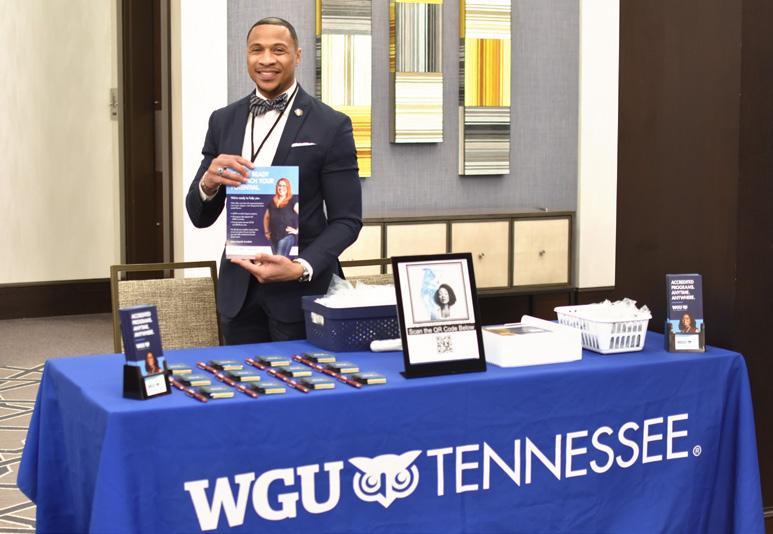

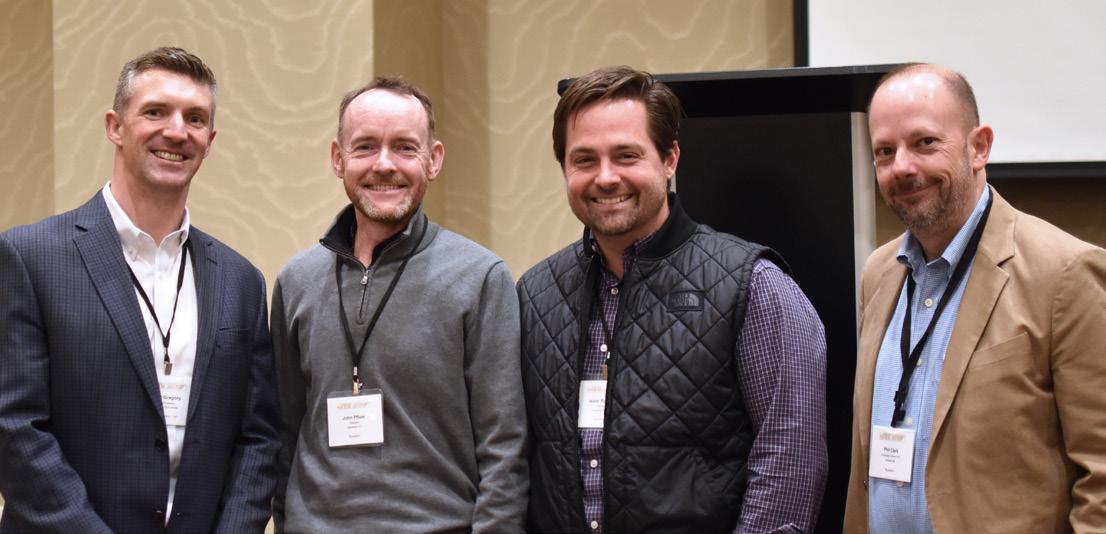







1 2 4 3 5 6 7 8 9 26 www.HRProfessionalsMagazine.com




27 www.HRProfessionalsMagazine.com
BRIDGING THE PAY EQUITY GAP

How to Conduct a Pay Equity Analysis
By RENEE L. MARTIN
When the Equal Pay Act was enacted in 1963, women were paid 59 cents on the dollar compared to male counterparts, a 41% wage gap. Although the gap has narrowed, it still exists.
How Big is the Pay Gap?
In 2023, on average, women are paid 82 cents for every dollar that a man is paid for performing work of similar value.1 The pay gap is even wider for women of color, mothers of young children, and women with disabilities.
In 2022, men were paid $10,381 more than women across the nation.2 Over the course of a 40-year career, women stand to lose approximately $407,760.3
Imagine the impact of that earned income if available to invest in her 401k, for her children’s education, or to purchase a family home. The opportunity for economic growth and financial security is significantly diminished when women and minorities aren’t paid the full rate for which they have worked.
Pay Equity as a Key Retention Strategy in 2023
Pay equity is part of your Employer Brand and can significantly impact your acquisition and retention strategies. It is also an organizational risk if left unidentified or unmanaged.
Like anything else, when pay equity is truly measured and managed, it will improve. We measure organizational performance everyday – it determines whether shareholders buy/hold our stock, and whether donors and grant makers continue to invest in nonprofit organizations. We measure individual job performance, often using it as a basis for bonuses and career advancement. Pay is one of the most concrete and visible measures of a commitment to fairness. If we want a culture of diversity, equity, inclusion and belonging that will serve as a competitive advantage, we must get pay equity right.
Whether organizations accept it or not, they are measured on their commitment to pay fairness and transparency. In fact, 85% of workers are more likely to apply to jobs that list salary ranges.4
Even in locations where there is no legal requirement to post salary ranges, 79% of companies said they are planning, considering, or already actively posting pay range data.4 These companies know that the best employees have choices. With 517,000 new jobs added in January in the U.S. and an unemployment rate of 3.4%, (the lowest jobless rate since May 1969), we can be sure that retentionand pay - will continue to be a key talent strategy this year.
How to Conduct a Pay Equity Analysis: Key Steps
1. Protect your organization – partner with legal counsel to establish legal privilege.
2. Run an employee census report from your HRIS/payroll system. Group employees based on salary grade (if you have a salary structure) or based on substantially similar work or work of equal value.

3. For each employee group, calculate average pay for 1) male versus female and 2) white versus non-white incumbents. This results in your Raw Pay Gap.
4. Add columns for tenure, years and level of experience, specialized skills/ education, job performance, and other factors that are potentially acceptable reasons for differences in pay.
5. Within each employee group, highlight incumbents who earn less than the average for male and white incumbents. Provide rationale for any pay differences that appear to be acceptable reasons.
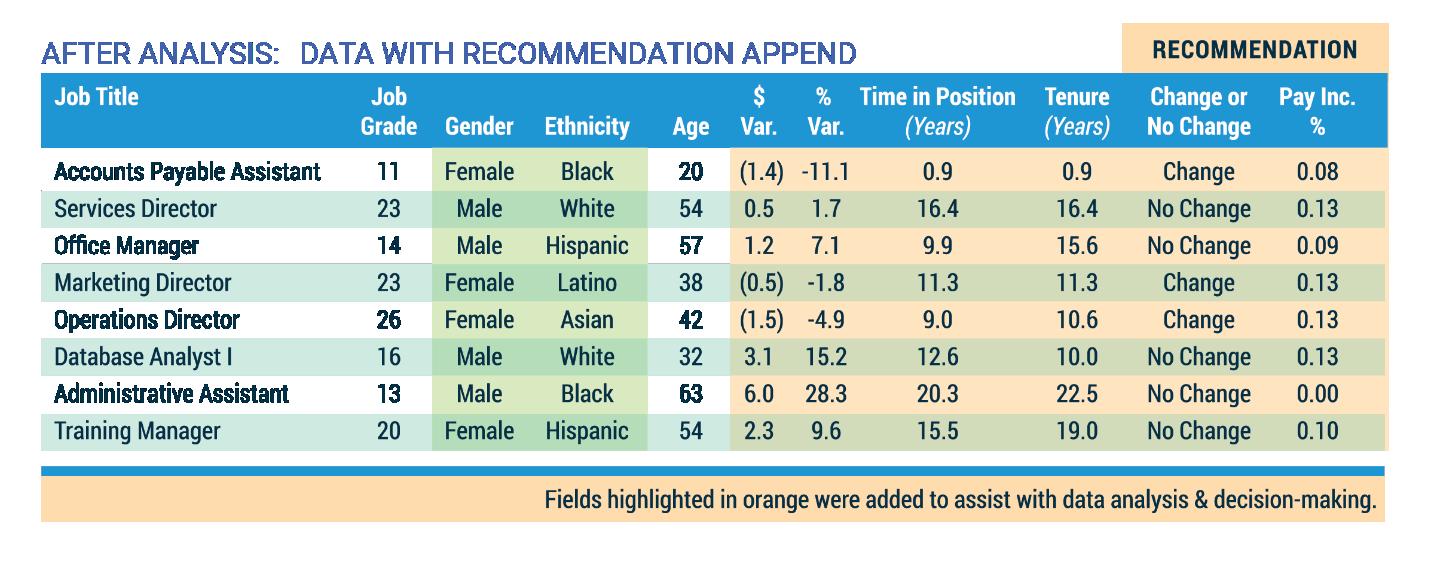
6. If pay anomalies are not based on permissible factors, consider what remediation is necessary. Most guidance suggests that a 2 - 7% difference may be acceptable.
7. Develop and communicate your compensation strategy statement to employees. Convey your commitment to reviewing pay equity on an annual basis and assessing all pay decisions as they occur, including promotions, adjustments, new hire offers, etc. This includes decisions about base salaries, bonuses, and any other incentives.
Data with Recommendation Append
Looking Beyond the Numbers
Consider whether there is potential for bias (implicit or explicit) in the measures used to determine successful job performance, and whether all incumbents have equal opportunity to meet the performance metrics. For example, if your organization rewards employees for on-call availability, this may exclude some of your employees from meeting that performance metric, so you would want to ensure that there are other ways for employees to demonstrate successful performance. This is where it becomes important to understand root causes so that systemic pay gaps can be addressed, rather than addressing only the symptoms.
Pay Equity Technology Solutions
Since the manual process can be cumbersome, it is worth mentioning a few technology solutions that can help to ease the burden.
Decusoft offers a comprehensive compensation management software called The Compose® Suite. The software provides analytics and dashboard reporting capabilities of employee demographic and compensation data, including current compensation, salary progression, gender, race, ethnicity, age, tenure, disability status, veteran status, salary grade, and location. You can look at compensation by performance rating, ethnicity, age, gender, or a combination of data categories, thus there is ample opportunity to filter by intersectionality.
JER HR Group offers CompBldr, a compensation analysis SaaS (software as a service) solution. This technology allows you to analyze pay by gender, race/ ethnicity, age groups and other relevant data in comparison to internal mean pay lines. Pay differences by similar job valued positions and glass ceiling pay disparities are also identified, all presented in easy-to-understand visual reports. Consultants are available for further analysis to evaluate if justified or unjustified systemic pay disparities exist and need to be mitigated or eliminated.
Conclusion
A pay equity compensation analysis helps corporate executives and HR leaders obtain a clear picture of the current state of pay equity within the organization, and identifies where significant pay inequities exist. With this knowledge, you can build a path forward that mitigates risk today, improves your employer brand, and positions your organization for success for years to come. Contact JER HR Group to discuss our compensation and pay equity analysis services in the for-profit, nonprofit, and government/public employee sectors. info@ jerhgroup.com 866.475.7687 JERHRGroup.com
Renee L. Martin, SHRM-SCP, is a Senior Consultant with JER HR Group, a human resource firm helping clients resolve their toughest challenges in compensation, employee learning, organizational development and HR. JER HR Group works collaboratively with clients to solve big challenges, meeting clients wherever they are on the path to understand culture, issues, and change. You can reach author Renee Martin at rmartin@jerhrgroup.com 717.673.9116. @jerhrgroup
28 www.HRProfessionalsMagazine.com
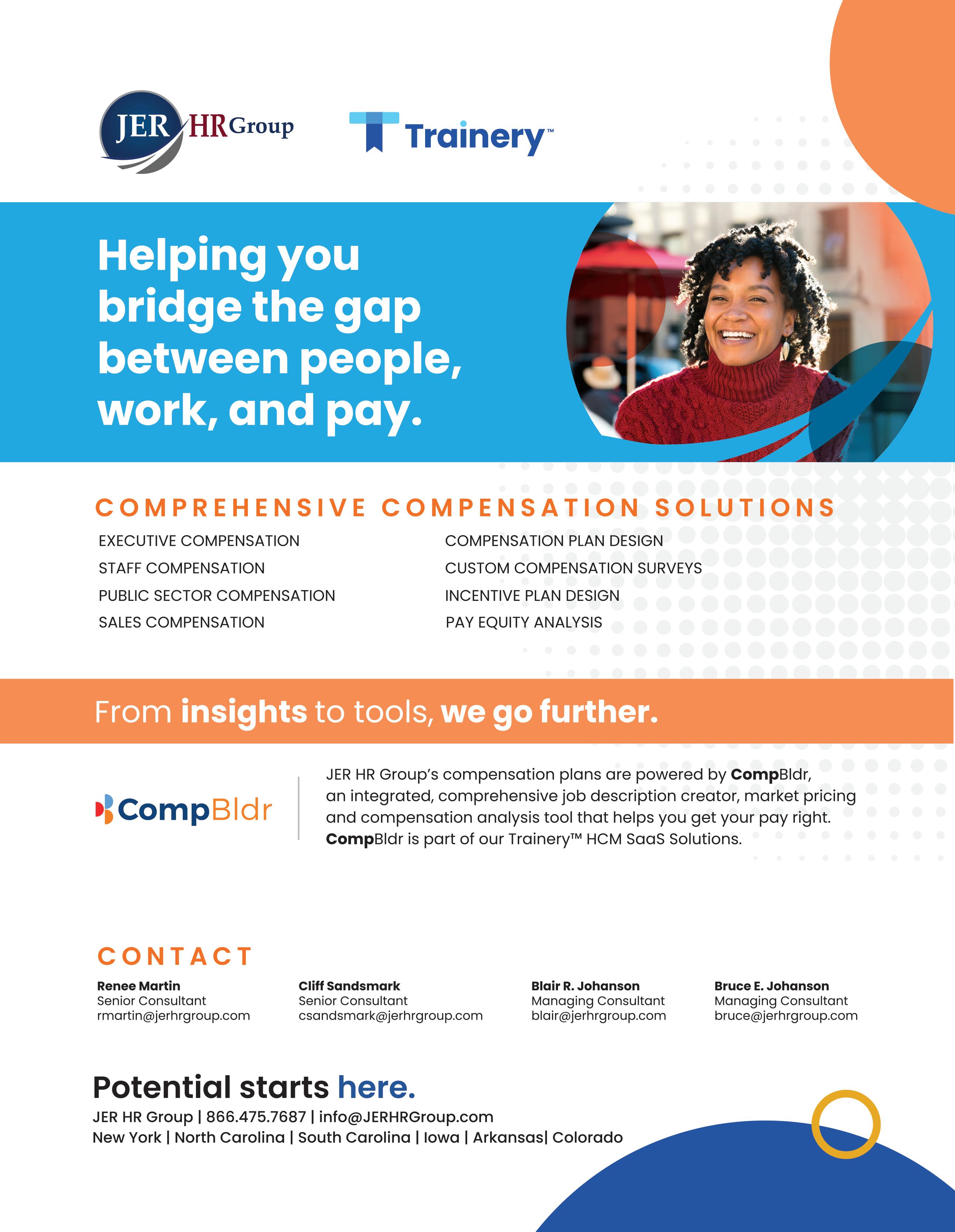














30 www.HRProfessionalsMagazine.com
Rising Stars


Presents 2023 in Labor and Employment Law














We are proud to present the 2023 Rising Stars in Labor and Employment Law submitted by our sponsors. These attorneys are 40 or under and have practiced law 10 years or less. They are already top performers in their respective firms.



TM 31 www.HRProfessionalsMagazine.com
Bass, Berry & Sims
Bass, Berry & Sims provides full-service representation to public and private employers ranging from Fortune 500 companies to small locallyowned businesses. Our Labor & Employment attorneys defend clients nationwide, and provide day-to-day counsel, with respect to claims of discrimination, retaliatory discharge, FMLA leave, and whistleblowing, as well as non-compete matters and employee misclassification issues. Our dedicated team of Employee Benefits attorneys advise companies on all facets of employee benefit issues, including ERISA compliance and the design, drafting, implementation, amendment, termination and administration of employee benefit plans.
Lymari Cromwell MEMBER, NASHVILLE
Lymari Cromwell counsels clients in all aspects of employment and labor relations law, representing industries as diverse as healthcare, hospitality and manufacturing. Lymari’s practice is primarily transaction-based, in which she counsels companies with respect to labor and employment issues arising in the course of mergers and acquisitions. She advises companies with regard to non-compete laws, overseeing significant employment-related due diligence in the context of acquisitions, and drafting and negotiating employment agreements.
Noah Black
ASSOCIATE, NASHVILLE
Noah Black works with clients on the design, implementation and administration of qualified benefit plans, health and welfare benefit plans and deferred compensation packages. He also provides diligence and support on employee benefits and compensation issues arising in mergers, acquisitions and other corporate transactions. Prior to joining Bass, Berry & Sims, Noah worked with the U.S. Department of Labor in the Employee Benefits Security Administration where he investigated retirement plans and plan service providers to ensure compliance with Title I of ERISA and negotiated with fiduciaries to resolve ERISA violations.
William Gebo

ASSOCIATE, MEMPHIS
Will Gebo works with clients on the design, implementation and administration of qualified benefit plans, health and welfare benefit plans and deferred compensation packages. He also provides diligence and support on employee benefits and compensation issues arising in mergers, acquisitions and other corporate transactions.
Maja Hartzell
ASSOCIATE, NASHVILLE
Maja Hartzell represents employers in a range of labor and employment law matters, defending against claims of discrimination, harassment, and retaliation before federal and state courts and other administrative entities. She has experience defending clients against claims arising under Title VII of the Civil Rights Act of 1964, the Americans with Disabilities Act, and the Family and Medical Leave Act, state whistleblowing statutes, along with the prosecution and defense of claims alleging breaches of restrictive covenants. In addition, Maja counsels employers on employee handbooks, employment agreements, and other employment policies and practices in response to and in compliance with developments in employment law.
Ashley Li ASSOCIATE, NASHVILLE
Ashley Li advises clients related to all facets of employment and labor law. She provides counsel to employers on issues regarding wrongful termination, discrimination, employee discipline, defamation, harassment, and other matters. She also has experience representing clients in litigation matters related to compliance with state and federal employment law issues involving wage and hour violations and leave-related issues.
Kimberly Veirs ASSOCIATE, NASHVILLE
Kimberly Veirs represents employers in state and federal litigation related to discrimination, retaliation, and wage and hour compliance.
Kimberly also counsels clients in all facets of employment law, providing counsel with respect to state and federal employment law compliance, including employment law issues involving the FMLA, ADA, FLSA and OSHA. She advises employers in matters involving employee discipline, wrongful termination, retaliation, discrimination, harassment, wage and hour claims, and other employment-related matters. Kimberly regularly advises companies on matters pertaining to employment agreements, severance agreements, terminations, handbooks and policies, and other workplace agreements.
Laura Mallory ASSOCIATE, NASHVILLE
Laura Mallory represents employers in all aspects of labor and employment law. She advises companies on a variety of employment matters and provides counsel to clients with respect to compliance with state and federal employment laws; hiring and termination policies; drug testing and other employment related issues. Her practice also involves the drafting of separation agreements, restrictive covenants, position statements, policies and employment handbooks.
Brittany Roberts
Kimia Movahed ASSOCIATE, NASHVILLE





Kimia Movahed counsels clients on the design, implementation and administration of qualified employee benefit plans, health and welfare benefit plans and deferred compensation packages. She also provides advice on employee benefits and compensation issues arising in mergers, acquisitions and other corporate transactions.

Catherine Simpson ASSOCIATE, MEMPHIS
Catherine Simpson assists clients with the design, administration, and compliance of qualified retirement plans, including defined benefit plans, 401(k) and 403(b) plans, profit sharing plans, ESOPs, and nonqualified plan alternatives. She also counsels clients regarding compliance with IRS, DOL, and PBGC laws and regulations applicable to employee benefit plans. Catherine’s practice also focuses on assisting with qualified plan conversions, terminations, and corrections, as well as implementing and administering health and welfare plans, including compliance with the Affordable Care Act, HIPAA, and COBRA.
LABOR
& EMPLOYMENT ATTORNEY, NASHVILLE

Brittany Roberts counsels clients on aspects of labor and employment laws, focusing on issues arising in the context of mergers and acquisitions. In this capacity, she performs employment-related due diligence involving the review of contracts and policies to ensure compliance and identify potential areas of risk within a transaction. She also advises companies on non-compete laws, employment agreements, and other matters related to the M&A process.

Kristin Titley LABOR & EMPLOYMENT ATTORNEY, NASHVILLE

Kristin Titley represents clients in all facets of employment and labor matters, including litigation involving discrimination, harassment, wage and hour issues, and proceedings before state and federal courts and administrative agencies. In addition to her litigation practice, she advises employers on all aspects of employment law, including complex issues related to contract disputes, discharge, discipline, and discrimination, as well as best practices with regard to employee leave and accommodation matters under the ADA, FMLA, and other statutes. Kristin also works closely with companies to design and draft employee handbooks and implement new policies related to the workforce.

32 www.HRProfessionalsMagazine.com
Rainey, Kizer, Reviere & Bell, PLC
As the issues facing employers and HR professionals become more frequent, challenging, and complex each year, you need a law firm that provides advice for your specific organization. For over 45 years, the Firm has advised businesses, non-profit organizations, and governmental agencies in all aspects of employment law through more than 50 attorneys licensed in Tennessee, Kentucky, Mississippi, Arkansas, Indiana, and Georgia. To learn how we can assist your organization, please contact us. raineykizer.com | 731.423.2414
Meredith Maroney JACKSON
Meredith Maroney is an associate attorney at Rainey, Kizer, Reviere & Bell, PLC. She is a graduate of William and Mary Law School and the University of Tennessee. Meredith practices civil litigation with a focus on employment law. Meredith advises clients on compliance with federal and state law, immigration considerations, workplace disputes and investigations involving single or multiple employees, as well as best practices in the workplace. Meredith regularly advises employers on matters involving Title VII of the Civil Rights Act, Tennessee Human Rights Act, Americans with Disabilities Act, Age Discrimination in Employment Act, and the Fair Labor Standards Act.
Matthew R. Courtner JACKSON
Matthew Courtner is a member at Rainey, Kizer, Reviere & Bell, PLC. He is a graduate of Mississippi College School of Law (J.D.) and New York University School of Law (L.L.M.). He is a member of the firm’s Employment, Labor, and Governmental Law practice group. In his practice, Matthew regularly assists private and public employers in ensuring compliance with federal and state employment laws. Matthew regularly assists employers in complying with, among others, Title VII, the ADA, the ADEA, the FLSA, FMLA, and Tennessee’s state equivalent laws. Among other things, He assists employers with workplace investigations, keeping their handbooks up-to-date, and handling day-to-day issues that may arise, such as ensuring compliance with an employee’s request for leave. He also represents employers in employment law litigation starting with the EEOC all the way through trial and the appeal.
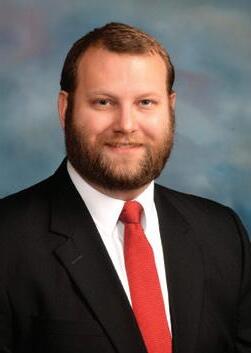
Littler
At Littler, we understand that workplace issues can’t wait. With access to more than 1,700 employment attorneys in 100 offices around the world, our clients don’t have to. We aim to go beyond best practices, creating solutions that help clients navigate a complex business world. With deep experience and resources that are local, everywhere, a diverse team of the brightest minds, and powerful proprietary technology, we deliver groundbreaking innovation that prepares employers for what’s happening today, and what’s likely to happen tomorrow. Because at Littler, we’re fueled by ingenuity and inspired by you.
Emma Chase CHARLOTTE
Emma Chase represents businesses in all phases of employment litigation, including negotiating settlements, handling mediations and preparing for trial. She regularly advises employers on compliance with federal legislation including the Americans with Disabilities Act, Title VII of the Civil Rights Act, and the Affordable Care Act. She also has experience preparing and revising non-competition and non-solicitation agreements, employee handbooks, and self-insured health insurance policies.
Jessica N. Wimsatt LEXINGTON
Jessica Wimsatt has exclusively devoted her career to labor and employment law since 2015. She has experience with the Fair Labor Standards Act and the Kentucky Wage and Hour Act, including employee classification and wage and hour disputes. Jessica's background also includes negligent hiring and supervision claims. She has advised clients on drug-testing policies, drafted independent contractor agreements, and reviewed handbook provisions. Jessica has represented plaintiffs in a wide range of labor and employment and civil rights matters throughout the Commonwealth, including accommodations, exemption classifications, and litigation arising out of alleged discrimination, harassment, and retaliation.



33 www.HRProfessionalsMagazine.com
Workers’ Comp: How to Deny a Claim and Make it Stick
 BY T. JOSEPH LYNCH
BY T. JOSEPH LYNCH
The Workers’ Compensation system in the state of Tennessee is often frustrating and difficult to navigate for Tennesee employers. Often employers are confronted with situations in which an employee’s claim is either fraudulent or at least exaggerated with regard to its severity. In general the Tennesee Workers’ Compensation system and the Court tend to favor employees with regard to compensability determinations. That being said the 2014 legislative changes mitigated this somewhat. Prior to 2014, Courts gave deference to the employees in close questions of law or fact. This was done away with with the establishment of the new Bureaus of Workers’ Compensation Claims and the Court of Workers’ Compensation Claims in 2014. Nevertheless, the fact remains that employers are usually fighting an uphill battle when contesting medical causation and issues of whether an injury occurred in the course and scope of employment.
The denial of a claim can have significant repercussions. An employer or insurance carrier can utilize a Form C23 to deny a claim. This effectively stops both medical and indemnity benefits. However, if it is determined that a claim is wrongfully denied, the consequences can be somewhat severe. These consequences can include penalties from the Bureau of Workers’ Compensation Claims as well as the requirement that an attorney for the employee be reimbursed. Furthermore, if a claim is denied early, typically the medical treatment will be in the hands of the employee instead of the employer and the state of Tennessee has the right to provide a panel of physicians from which an employee can choose to treat. An early denial of a case can result in the employee having the freedom to choose their own physi-
cians and the employer will essentially lose the right to control the medical treatment. This is important due to the fact that an authorized treating physician selected from a panel is presumed correct on a number of legal issues. This presumption applies to medical causation and impairment.
As such, it’s imparitive that if an employer and/or insurance carrier choose to deny a claim, that they assess whether or not a full and sufficient investigation of the facts and circumstances of the claim have been conducted. Furthermore, the Courts frown upon an employer or insurance carrier making a determination to deny a case based upon medical causation when there is an absence of medical proof. The Court would prefer an employer or insurance carrier when in doubt of the compensibility of a claim for medical causation reasons, to provide a panel of physicians and then posit a series of causation questions to the authorized treating physician. Then the employer can make a denial determination based upon that physician’s conclusions and determinations regarding medical causation. Employers and insurance carriers are on a firmer footing if instead of a medical causation determination they are making a determination based upon an affirmative defense. Affirmative defenses in Tennessee include things like notice, statute of limitations, willfull misconduct, etc. Again the court will scrutinize the facts and circumstances upon which the affirmative defense is based and ultimately there could be consequences in the way of penalties and reimbursement of attorney’s fees if a claim is wrongfully denied.
As such, it is always recommended that if an employer is seeking to deny a claim that they consult with a legal expert.
Another frustration that is common to Worker’s Compensation cases is the changing landscape of medical causation testimony. Oftentimes doctors will respond to causation letters but later in deposition testimony will change or alter the nature of their medical opinions.
34 www.HRProfessionalsMagazine.com
Also additional independent physicians can be retained whose opinions can change the landscape of a case. The Courts are placed in an unenviable position of having to choose between which medical professional is more credible or believable. Judges are not medically trained and so it’s quite a challenge for the court system to navigate these waters.

Statistically 99% of Workers’ Compensation cases in Tennessee, legitimate or otherwise, settle. A valuable tool to resolve cases that are either fraudulent or questionable in nature and extent of disability can be resolved on what is called a “doubtful and disputed bases”. This is a resolution in which the parties simply agree to pay money and to refuse to acknowledge whether or not the claim is in fact compensable. This allows for a dispute resolution and the closure of all future medical treatment without the necessity of going through a long, protracted, and expensive process of litigation.
An employer’s relationship with their insurance carrier can be of great value. Typically employers will either be fully insured and employ an insurance company to function as a third-party administrator or they will rely entirely on an insurance carrier to not only handle a claim
but also provide medical and imdenity benefits. Typically a successful denial of a claim will depend upon the information that is provided to the insurance carrier or TPA from the employer. As such, cooperation and communication between an employer and an insurance carrier can be invaluable in making a denial stick.
In conclusion, employers are encouraged to work closely and report regularly to their insurance carrier and defense counsel in order to properly navigate the waters of a C23 Notice of Denial. Given the potential consequences, it is important to weigh all the pros and cons priot to deniying a claim. Sometimes emotions can be high with regard to an employee’s behavior and the decision to deny a case should be based not on emotions but on logic, facts and applicable laws and regulations.
T. Joseph Lynch, Member Wimberly Lawson Wright Daves & Jones PLLC Knoxville, Tennessee office jlynch@wimberlylawson.com
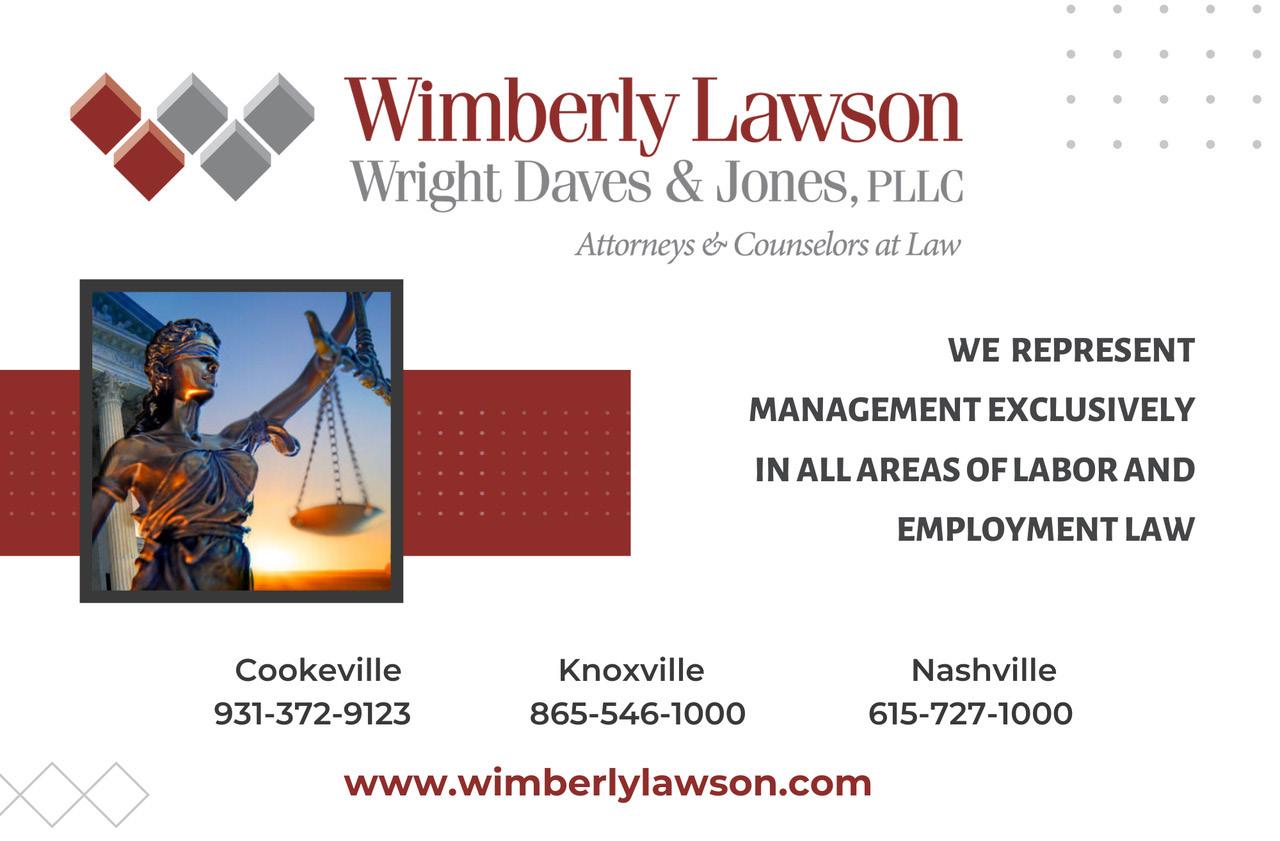
35 www.HRProfessionalsMagazine.com
of Workers’ Compensation cases in Tennessee, legitimate or otherwise, settle. Statistically 99%
The Compelled-Speech Doctrine Can the Government Tell You What to Say?
By DALE CONDER JR.
The First Amendment prohibits the government from making any “law . . . abridging the freedom of speech . . . .” U.S. Const. amend I. The free-speech clause also prohibits the government from compelling speech. In other words, the government cannot tell you what to say. Rumsfeld v. Foundation for Academic and Institutional Rights, et al., 547 U.S. 47 (2006).
The compelled-speech doctrine has a long history in Supreme Court caselaw. In 1940, the Supreme Court upheld the authority of states to compel publicschool students to salute the flag and recite the pledge. Minersville School District v. Gobitis, 310 U.S. 586 (1940). Three years later in West Virginia State Bd. of Educ. v. Barnette, 319 U.S. 624 (1943), the Court overruled the Gobitis decision. The justices on the two Courts were the same, except Robert Jackson and Wiley Rutledge replaced Charles Evans Hughes and James McReynolds. In his opinion for the Court, Justice Jackson said, “If there is any fixed star in our constitutional constellation, it is that no official, high or petty, can prescribe what shall be orthodox in matters of politics, nationalism, religion, or other matters of opinion[,] or force citizens to confess by word their faith therein.” Is this star still “fixed” in our constitutional constellation?
This doctrine continued to develop outside of the classroom. In 1977, the Supreme Court held that a state could not punish you for covering up a state motto on your license plate. Wooley v. Maynard, 430 U.S. 705 (1977). Chief Justice Burger wrote, “The right to speak and the right to refrain from speaking are complementary components of the broader concept of ‘individual freedom of mind.’” Nor can the government require a private organization to include in its parade groups whose messages infringe on the private group’s messages. Hurley v. Irish-American, Gay, Lesbian, and Bisexual Group of Boston, 515 U.S. 557 (1995). “To do so would infringe on the private group’s autonomy and right to disseminate its own messages.”
David L. Hudson, Compelled Speech, THE FIRST AMENDMENT ENCYLOPEDIA https://www.mtsu.edu/first-amendment/article/933/ compelled-speech
Can the government compel speech through public-accommodation laws?
The group wishing to join the parade in Hurley relied on Massachusetts’s public-accommodation law to compel parade organizers to allow their participation. In Masterpiece Cakeshop v. Colorado Civil Rights Commission, Jack Phillips, owner of Masterpiece Cakeshop, refused to bake a wedding cake for a same-sex couple. Doing so, would violate his religious beliefs. The couple filed a complaint with the Colorado Civil Rights Commission. The Commission concluded that Phillips violated Colorado’s public-accommodation law, and Colorado courts affirmed the Commission. Phillips appealed to the Supreme Court. The Court held that the Commission’s conduct in evaluating Phillips’s reasons for not making the cake for the same-sex couple violated the Free Exercise Clause. Colorado failed to apply its law in a neutral
manner with regard to religion. In Masterpiece Cakeshop, the Court did not answer the free-exercise or free-speech questions. On the same day the Supreme Court issued its opinion, a potential customer asked Masterpiece Cakeshop to bake a pink cake with blue frosting to celebrate her transition from male to female. Not surprisingly, Phillips refused citing his religious beliefs. This led to a return engagement for Phillips with the Colorado Civil Rights Commission and Colorado courts where he lost again. Phillips plans to appeal. The Supreme Court did not answer the questions at the core of the case, i.e., can the government compel speech or action in violation of one’s religious beliefs? Absent some judicial legerdemain, the Court will have to answer these questions this term in 303 Creative, LLC, v. Colorado

Civil Rights Commission
Lorie Smith, the owner of 303 Creative, LLC, designs websites. She does not design websites, however, promoting messages that are inconsistent with her religious beliefs. Seeing how poorly Jack Phillips fared before the Colorado Civil Rights Commission and Colorado courts, Smith sued to prevent the Commission from enforcing Colorado’s public-accommodation law against her.
Ms. Smith “creates original, online content that is consistent with her faith.” Petition for Writ of Certiorari at p. i. ( https://www.supremecourt.gov/DocketPDF/21/21476/193619/20210924115918275_USSC%20Petition%20 for%20Writ%20of%20Certiorari.pdf ). The parties agree that Ms. Smith provides services for all people regardless of classifications such as race, creed, sexual orientation, and gender. 303 Creative LLC and Smith v. Elenis et al., Docket 19-1413 at p. 13 (10th Cir. 2021). Ms. Smith does refuse, however, to design websites for same-sex weddings and other events that are contrary to her religious beliefs.
The Commission prohibited Ms. Smith from putting a message on her website stating her religious objection to designing certain websites that conflict with her religious beliefs. Colorado would not allow her to post such a statement because the state viewed this as an act of discrimination. The state also told Ms. Smith she had to design websites for all comers regardless of her religious beliefs. En route to the Supreme Court, Ms. Smith had to stop at the Tenth Circuit Court of Appeals. The Tenth Circuit found that although Smith had a First Amendment right, the state’s interest in combating discrimination substantially outweighed Smith’s First Amendment right against compelled speech. On December 5, 2023, the Supreme Court heard oral argument in 303 Creative, LLC.
36 www.HRProfessionalsMagazine.com
Other First Amendment compelled-speech and free-exercise cases
The resolution of 303 Creative, LLC, will likely save Jack Phillips a return trip to the Supreme Court. And there are other cases making their way to the Supreme Court. One example is Yeshiva University v. YU Pride Alliance. A student group at Yeshiva University, YU Pride Alliance, applied for recognition as an official student group. YU disagrees with the university’s view that same-sex relationships are contrary to the Torah-inspired values of the university. The university concluded that recognizing this group would have results that are contrary to the Torah and denied the application. The student group then sued the university in New York state court arguing that Yeshiva University violated the New York City Human Rights Law. The university sought a stay pending appeal, but the state courts denied this request. The university then sought emergency relief in the Supreme Court of the United States. The Court denied relief based on its opinion that the university still had options for relief in the state courts. Justices, Alito, Thomas, Gorsuch, and Barrett, dissented from the denial of relief.

Finally, Klein, et vir. v. Oregon Bureau of Labor and Industries awaits the Court’s decision on the Kleins’ petition for certiorari. The Kliens, like Jack Phillips, were custom wedding-cake bakers in Oregon. Oregon, too, has a public accommodations law. The Kliens designed and created only custom cakes; there were no off-the-shelf cakes. The Kliens made custom cakes for anyone, regardless of a customer’s sexual orientation, and had made cakes for the Complainants. Like Phillips and Smith, the Kleins would not use their artistic talents to make a wedding cake for a same-sex marriage. The Board did as the Colorado Commission has done and found the Kleins guilty of discrimination. Because Mr. Klein quoted scripture during the hearing, the Board imposed heightened damages of $135,000.00. The Kleins’ business
The Supreme Court initially reversed and remanded the Kleins’ case in light of the Court’s Masterpiece Cakeshop decision. On remand, the Oregon courts agreed the board had treated the Kleins badly, but concluded any constitutional violation was manifest only in the damages. The Board then reviewed the case and imposed a $30,000.00 fine. As of the writing of this article, the Supreme Court has not taken action on the Kleins’ petition for certiorari.
Do these cases affect private employers?
Because these cases address government-compelled speech, it is not likely that these cases will have a direct effect on private employers. Although the applicable laws are different, an analysis of these cases might be helpful in analyzing religious discrimination claims under Title VII or similar state laws.

Conclusion
When the dust settles, it is likely that Justice Jackson’s “star [remains fixed] in our constitutional constellation.”
Mr. Conder is a Member of Rainey, Kizer, Reviere & Bell, P.L.C., and has been associated with the firm since receiving his Doctor of Jurisprudence, with honors, in 1992 from the University Of Tennessee College Of Law. He has significant experience in the areas of employment law (representing employers only), personal injury litigation, and federal civil rights litigation. He also has significant experience in appellate advocacy. Mr. Conder has represented a number of police departments and municipalities in 42 U.S.C. § 1983 litigation. Mr. Conder is a member of the firm’s Governmental Law Practice Group and the Employment
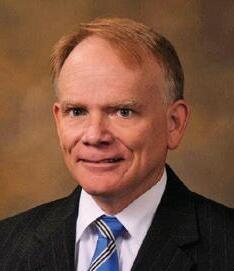
As the issues facing employers and HR professionals become more frequent, challenging, and complex each year, you need a law firm that provides advice for your specific organization. For over 45 years, Rainey Kizer Reviere & Bell has advised businesses, non-profit organizations, and governmental agencies in all aspects of employment law. To learn how we can assist your organization, please contact us at 731.423.2414. TENNESSEE MEMPHIS • MARTIN • JACKSON • NASHVILLE • CHATTANOOGA KENTUCKY FULTON THE STRENGTH OF EXPERIENCE raineykizer.com Tennessee and Kentucky do not certify specialists in the area of employment law. Attorney Advertisement 37 www.HRProfessionalsMagazine.com
Here’s How Kindness Can Change your Culture
By SHELLEY BAUR
Ever since I was a child, the importance of kindness has been ingrained within me. Kindness can carry us far in life and help enhance not only our own lives but the lives of those we love and that we interact with daily. It wasn’t until I was older that I started to notice that not everyone sees the value of being kind. Some people see the value in your kindness to take advantage of you.
When I was in high school and began taking on more responsibilities, I flourished in getting accomplished whatever task or errand my parents asked of me. I recall a few occasions where I even baffled my father. Though I was a “Daddy’s girl”, and he was a kind man to those he loved, occasionally he would be impatient if I didn’t agree with him. You know “that look”?
The hardest lesson I had to learn was that people will try to take advantage of your kindness. I still remember the first time someone truly abused my kindness. It broke my heart.
I learned the most important lesson of my life: some people will see your kindness as a weakness. They will use your kindness in any way they can to put themselves ahead in life. I like to call these people “opportunists.”
An opportunist sees kind people as targets – they live in a world that is everywoman-for-herself. To be frank, they have no shame and no sense of humanity. They sleep easy, not caring that they were brutal. They just view it as just another “I win, you lose.” Unfortunately, for every kind-hearted person in the world, there is at least one opportunist trying to exploit them.
Don’t Let Them Win
Though opportunists will almost always exist in the world, you can ensure that they don’t take advantage of you. Unless you let them.
I know it can be easy to just stop being kind to everyone you meet when you are jaded by an opportunist. Don’t let them win! Today, we need kind people in the world...more than ever.
If everyone treated those around them with love and kindness, just imagine how amazing our world would be. I know it is a more optimistic outlook on life, but it is a path of personal power. You will be amazed at what simple kindness can allow you to accomplish.
Let the opportunists see your kindness…but don’t let them abuse it. That is how your kindness can be a weakness. Instead, redefine their understanding of your kindness. Show them that though you treat everyone with kindness, it can and will be taken away if abused.
On the other hand, don’t become the most difficult person to deal with either. Instead, be direct while staying calm. Show the opportunist that you do have personal strength. Short of superior physical strength, the only way you can be abused is if you allow it. If you are dealing with a team member or colleague that believes they can take advantage of you; you must be clear and direct about your intended outcome.
Don’t Make it Personal









Focus your conversation on results. Don’t sugar coat anything. If you are in a leadership position, it might be time to take a course of action that sets a precedent for your team. Some people will perceive you to be unfair. In the end, you are doing your job by improving your team. Never make it personal, it is always and only about the job.
Oftentimes you find peers trying to take advantage of your kindness. You don’t want to be a “tattletale” or a snitch. I get it. You must be fair to yourself as much to your team members. You want to be fair, set a precedent and be consistent. Work with your team to get the job done. Stand-up for yourself if you see that an opportunist is trying to take advantage of you. And be ready to mentor and coach a team member if you see that they are a target.
Whether you are in a leadership role or just one of the team members, stay kind and offer to help first. Many people want to improve themselves and by helping them to be better you are helping the team to be better. One of my favorite people helped me write this article, adding richness with her youthful perspective. I’m proud of her because she learned very early in life that it’s important to be kind…all the time.
Kindness is always in season, and I’m intentional about acknowledging it.
I invite you to be honest over coffee, and I invite your reflections to enhance my own understanding of kindness, creating a safe place wherever you are, or any other topic you’d like to discuss.
Shelley Baur Leader Developer & Coach Author, Integrity-Based Communications shelley@shelleybaur.com www.shelleybaur.com

38 www.HRProfessionalsMagazine.com
One Source Associates: Building People for Life & Leadership
For over twenty years One Source Associates has worked with local and national brands to educate, strengthen, and retain high-performance team members.
Our programs provide teams way to successfully:
· Improve communication within teams through coaching for clarity, confidence, and credibility
· Develop keynote skills, basic to advanced
· Presentation skills, including body language, eye contact, owning the space before you speak

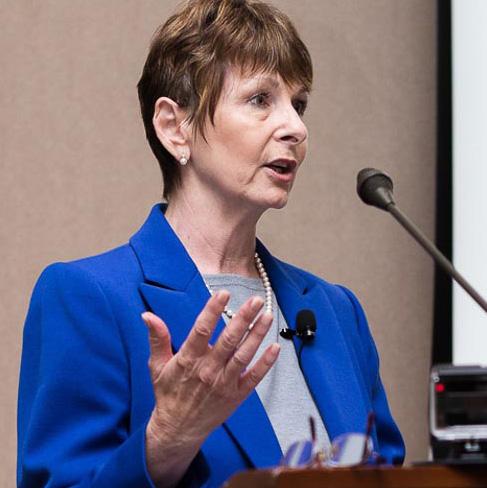
· Dialog for requesting help, boundary violations
· Giving & Receiving Effective Feedback
· Master the Integrity-Based Communications 6-behavior model, identifying Habits to Make (empowering) and Habits to Break (self-sabotage)

· Improved critical thinking
· Blend multi-functional teams
· Replace text messaging with 1-2-1 conversations
· Leverage The Accountability Advantage to produce high-performing teams
To learn more about the programs available, let’s arrange a conversation to discuss how we can provide the solutions you need to empower your team.
Mobile 901.340.7517 | Email: shelley@shelleybaur.com | Website www.shelleybaur.com
The job market is hot... But so is inflation.
TIME TO INCREASE YOUR EARNING POTENTIAL
COMPLETE YOUR HR MASTER’S DEGREE ONLINE

Illinois’ accredited and internationally-recognized master’s program is available online, tailored to the needs of working professionals. Whether you have prior experience in human resources or you are transitioning from another function, you will find immediate applicability to your work. The MHRIR curriculum is taught by experienced faculty and industry experts and designed to build business acumen and a strong foundation in the field.
Students have an average of eight years of experience in HR or a related business function, and benefit from peer networking in selective classes. The student body includes a diverse and experienced group of working professionals from long-standing corporate partners like bp and PepsiCo, in addition to professionals in non-profit and consulting.
Beyond the classroom, students build their networks and participate in an active community of practitioners. Seventy-three percent of students are promoted while still in the program or within six months of graduation.
For more information, visit go.illinois.edu/LER_Online.
BOOST YOUR PROFESSIONAL KNOWLEDGE
The School now offers a certificate program geared towards professionals who want to freshen their HR knowledge, or for those with little HR background who wish to build competency. The program has four tracks: Fundamentals of Human Resources, Human Resources Management, Compensation Best Practices, and HR Data Analytics. Each track has three courses (12 credit hours total, four credit hours per course), and can be completed in 7-10 months. Candidates that complete one or more certificates can count their certificate credit towards our full master’s program if they wish to continue their journey.
Full information about the certificate options is available at go.illinois.edu/LERCertificate.
For any questions about our online offerings, email Eden Haycraft, Associate Director, Graduate Online Programs at ehaycra@illinois.edu.
40 www.HRProfessionalsMagazine.com
On average, students receive a $20k salary increase after completing the program.


RESEARCH $5,000 $3,000 QUARTERLY $70 HR JOBS $299 WEBCASTS $300 COMPLIANCE UPDATES $1,500 EXPRESS REQUESTS $1,800 HR TEMPLATES $1,000 HR KNOWLEDGE ADVISORS $750 HR MAGAZINE $5,000 QUARTERLY $299 HR KNOWLEDGE Drive change in the world of work New to HR? Want to hone your skills? SHRM is here to help. Join now and access more than $13,000 worth of HR tools, research and expertise for only $244. SHRM.ORG/DRIVECHANGE 41 www.HRProfessionalsMagazine.com
Investments that Will Improve HR Data Management

 By TODD A. MCFALL and MEGAN REGAN
By TODD A. MCFALL and MEGAN REGAN
Data tell stories. Human resource departments should aim to catalogue data in a way that allows for accurate stories to be told about the organization of which it is a part and to collect those data at a relatively low cost. Meeting those goals requires recognizing that making small investments now can lead to cost reductions and benefits that will pay dividends in the future.
Let’s face it, though. The operation of successful data management systems is like using a television remote. We take it for granted when the systems work as expected, despite problems lurking out of sight. However, when complications of a data management system are revealed, frustrations rise quickly as valuable time must be burned to find solutions to problems that already could have been solved. Just like when the remote fails to work right before the big game starts, weaknesses of data management tend to reveal themselves at the most stressful and difficult-to-navigate moments organizations face.
No system is perfect, but organizations can make smart and disciplined investments to improve the management of HR databases. Here are some simple investments to consider implementing to improve your organization’s HR database management. File these investment ideas under a dash of prevention is worth a pound of cure.
Investment 1:
Take every precaution to avoid employees entering data directly into a database. People make mistakes. Mistakes are expensive to correct and can lead to wrong conclusions if not discovered. Instead, find ways in
which employee records can be uploaded directly to the HR databases. These types of records might track performance, work history, or numerical summaries of evaluations.
Obviously, many kinds of data still need to be entered by hand, so a wise investment is to find ways to mitigate the chance of errors occurring at the entry point. Systems that allow for dropdown menus to be used in replacement of typing entries are such an investment. Birthdays, start dates, performance records, and pay data are examples of fields in which data entry can be made more accurate with small changes to the interfaces with which workers interact.
Investment 2:
If possible, avoid the use of qualitative variables. Occasions in which employees enter descriptions or observations about themselves or other employees or the work they’re doing will be full of mistakes and difficult to interpret in meaningful ways. Again, these types of entries cannot be entirely avoided, so steps should be taken to find ways to normalize input protocols for these kinds of observations. Train employees to use keywords that can be searched and tabulated easily when necessary. A good example of such observations are job titles, which are often incredibly important in organizations with hierarchical structures but perhaps hard to reconcile across divisions within the organization. Finding ways to normalize titles can be incredibly helpful when occasions find organizations and require them to produce accurate analyses of employee records.
42 www.HRProfessionalsMagazine.com
Schedule consistent audits of the databases. Modern data analysis tools can be used to spot problematic entries at a relatively low cost. So...it turns out that sales associate is not earning $360,000 this year. And...it seems that person did not start working here in 1919. Consistent audits are a lower-cost way of finding errors and carry the added benefit of allowing perspective to develop organically about ways your database management system can evolve. Incremental adjustment is usually easier to handle than wholesale change.
These low-hanging, high-return investments offer a host of payoffs besides making it more likely that your organization will avoid steep costs at stressful moments. First, organizations should believe that keeping accurate depictions of employees’ histories with your organization to be appropriate stewardship of their working lives and valuable to the organization of which you are a part. These steps will help organizations meet that responsibility. Second, organizations can use accurate and well- catalogued records to avoid problems like bias or discrimination, perceived or otherwise. Mitigating these issues provide downstream benefits like improved morale that comes from employees believing they are being treated fairly or a reduced likelihood of legal challenges to the organization’s operating procedures, which means avoided stress and big payouts to legal teams and consultants. Organizations with burnished reputations for treating employees justly also have easier times recruiting and retaining talent compared to organizations with dodgier reputations. Finally, the whole organization can be improved with efficient HR data management because clearer correlations can be drawn between productivity and employees’ efforts.



In the end, those data are going to have to tell a story. There is no reason to rely solely on the hope that the story the data tell is easily understood and believed. Make appropriate investments now to sharpen up your organization’s data management practices to help make it easier for trustworthy stories to be told in the future.
 Megan
Megan
Investment 3:
Regan, Ph.D. Piedmont Economic Consulting, LLC And Wake Forest University at Winston-Salem, NC
Todd A. McFall, Ph.D. Piedmont Economic Consulting, LLC. And Wake Forest University at Winston-Salem, NC
43 www.HRProfessionalsMagazine.com
A Winston Salem NC-Based Firm Offering Economic, Data Management, and Litigation Consulting Services
SHRM 2023
Presents
Affordable Online SHRM-CP® | SHRM-SCP® Certification Exam Prep Class
Online classes begin April 12, 2023 and will meet twice per week for 12 weeks on Monday and Wednesday evenings from 6:00 PM to 7:00 PM.
The total cost of the SHRM-CP® | SHRM-SCP®
Online Certification Exam Prep Class is $995 (plus $25.00 shipping)

You may pay by PayPal, credit card or check.
2023 Spring Exam Window
May 1 – July 15, 2023
Guarantee
If you do not pass, you can retake the class at no additional charge if you meet these two requirements:
– Attend 80% of the scheduled online classes
– Score 80% on all practice quizzes
Deadline to register is April 4, 2023
Contact cynthia@hrprosmagazine.com OR visit our website at www.hrprofessionalsmagazine.com
About the instructor:
Cynthia Y. Thompson is Principal and Founder of The Thompson HR Firm, a human resources consulting company in Memphis. She is a senior human resources executive with more than twenty years of human resources experience concentrated in publicly traded companies. She is the Editor | Publisher of HR Professionals Magazine, an HR publication distributed to HR professionals in Alabama, Arkansas, Florida, Georgia, Kentucky, Louisiana, Mississippi, North Carolina, Tennessee, and Texas.
Cynthia has an MBA and is certified as a Senior Professional in Human Resources (SPHR) by the Human Resource Certification Institute and is also certified as a Senior Certified Professional by the Society for Human Resource Management. She is a faculty member of Christian Brothers University. Cynthia was appointed to serve on the Tennessee DOHR Board of Appeals by Gov. Bill Haslam in 2014.

For more information visit shrmcertification.org Learning System® Participant Materials
THE SNARES AND LEGAL LANDMINES FOR TODAY'S HR PROFESSIONALS
THE SNARES AND LEGAL LANDMINES FOR TODAY'S HR PROFESSIONALS
APRIL 18 | 2023
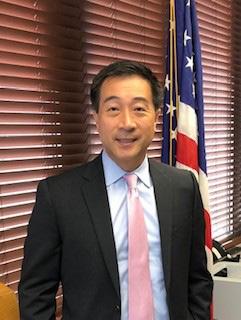
TUESDAY
8:15 am - 5:30 pm

REGISTER AT SHRM-MEMPHIS.ORG
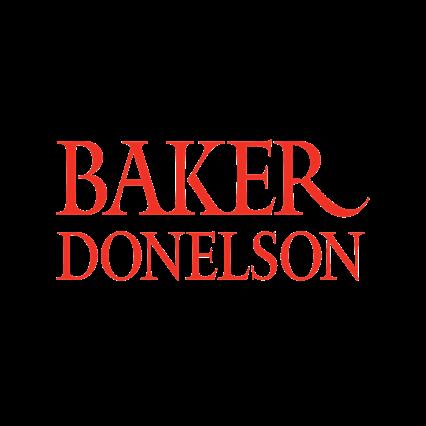
5 Ways to Boost Our Emotional Toughness
By HARVEY DEUTSCHENDORF

Anyone who has stepped outside of their comfort zone and attempted anything that could get them derision, ridicule has had to develop the ability to stay the course despite the naysayers and critics. This includes many well-known people who have changed the world, such as Bill Gates, Alexander Graham Bell and the Wright Brothers. While we look up to these famous people after they became successful, we need to remember that they had to have incredible resolve and emotional toughness to keep going towards a dream that others couldn’t see. They had to keep in check fears and doubts that would have stopped most people. We may think that kind, caring, empathic people lack the ability to be emotionally tough and can be more easily taken advantage of. Emotional toughness, however, does not require us to be belligerent, stoic, or unconcerned with what others may feel or think. It just means standing up for what we believe and setting firm boundaries. Some people believe that emotional toughness is something we are born with, we either have it or not. However, like with any other skill, it is something that can be developed with consistent practice and the right habits.
Here are 5 things we can do to develop our emotional toughness
Develop their ability to trust their judgement of characters and situations
“Fool me once, shame on you, fool me twice, shame on me”
Emotionally tough people are no more gifted than others when it comes to finding out who they can trust, and in what situations it is safe to be open and vulnerable. They make mistakes, trust people they shouldn’t, but learn from their mistakes and make the changes they need to. They remember their mistakes and seldom make the same ones a second time.
Continuously push their comfort zones
By continually taking action that falls outside of their comfort zones, emotionally tough people constantly expand their comfort zones. This increases their confidence and ability to take on new challenges. Their increased comfort zones lead to a willingness to take on more challenges brings them ever closer to reaching their potential. It doesn’t have to be a major leap, even small steps to push beyond our comfort zones expands them, allowing us to push further. In The Other Kind of Smart, www.theotherkindofsmart.com I give examples of people who achieved success because they were willing to move beyond their comfort zones.
Practice self-discipline
Emotionally tough people understand that persistence and determination are required to boost themselves both physically themselves They get enough sleep, stick to an exercise schedule, and take the time and effort to eat healthy food. Even when they don’t feel like following their schedule, they remind themselves how good they will feel when they do.
Chose to associate with positive people that lift them up
While we can’t choose our family or environment that we grow up in, we can choose the people we want around us when we leave that environment. People who become emotionally strong commit themselves to finding and maintaining strong relationships with people who are growing, striving, and moving towards their goals. They support people who inspire them and will in turn support them in their own comfort journey. As there will be naysayers and those who are threatened by determined people, having people close to us who we respect and can count on for support will help us rise above those who wish to see us fail.
Set goals, strive towards them, and don’t compare themselves to others
Emotionally strong people make a point of becoming more interested in their own lives and not getting caught up in wondering how they stack up to others, or how others see them. They set goals, celebrate when they reach them, then set further goals. In their minds they have a larger goal and purpose that they strive towards. Having a large overriding purpose or mission helps to motivate and keep them going when they run into roadblocks and setbacks.
Harvey Deutschendorf is an emotional intelligence expert, internationally published author and speaker. To take the EI Quiz go to theotherkindofsmart.com. His book THE OTHER KIND OF SMART, Simple Ways to Boost Your Emotional Intelligence for Greater Personal Effectiveness and Success has been published in 4 languages. Harvey writes for FAST COMPANY and has a monthly column with HRPROFESSIONALS MAGAZINE. You can follow him on Twitter @theeiguy.

46 www.HRProfessionalsMagazine.com

36% ONLY OF NONMANAGERS SAY THEIR COMPANY IS INVESTING EFFECTIVELY IN DEVELOPING THEIR SKILLS.* * Source: Global Workforce of the Future: Unravelling the Talent Conundrum, The Adecco Group, 2022. 222526 Prepare for your future by learning what’s next in HR at the SHRM Annual Conference & Expo 2023. Save up to $300 when you register by March 31. Register today at shrm.org/SHRM23-DONTWAIT Don’t fall through the cracks when it comes to career development.
YOU’RE READY TO REACH YOUR POTENTIAL.
We’re ready to help you.
WGU offers more than 60 respected bachelor's and master's degrees—each designed for driven people like you.

• ACBSP-accredited degree programs.
•ACBSP-accredited
•HR
• HR program fully aligned with SHRM curriculum.
• Flat-rate tuition between $7,150 and $9,060 per year.
We also let you complete courses online, at your own pace. So you can keep your job while working toward your dream career.
Online. Nonpro t. Accredited.

Learn more.
•Flat-rate more.
wgu.edu
wgu.edu/HR



















































 Certification Samantha Fulford
Certification Jeri George
SHRM Foundation
Kathryn Perez
Global Meredith Morris
Students Kimer Moore
Legal and Legislative Kristen Bauer, JD
Legal and Legislative Sarah Glaser
DEI
Mayela Macias
Membership April Metcalf
Membership Claudia Camacho
Emerging Professionals Valeria Fernandez
Leadership Development Lisa Blanton
Leadership Development Gonzalo Soliz
Certification Samantha Fulford
Certification Jeri George
SHRM Foundation
Kathryn Perez
Global Meredith Morris
Students Kimer Moore
Legal and Legislative Kristen Bauer, JD
Legal and Legislative Sarah Glaser
DEI
Mayela Macias
Membership April Metcalf
Membership Claudia Camacho
Emerging Professionals Valeria Fernandez
Leadership Development Lisa Blanton
Leadership Development Gonzalo Soliz










 By KEN JOYNER
By KEN JOYNER


 William G. Brown, CPA| Principal Member The Benefits Group will@benefits.place | thebenefits.group
William G. Brown, CPA| Principal Member The Benefits Group will@benefits.place | thebenefits.group

























































 BY T. JOSEPH LYNCH
BY T. JOSEPH LYNCH














 By TODD A. MCFALL and MEGAN REGAN
By TODD A. MCFALL and MEGAN REGAN



 Megan
Megan









